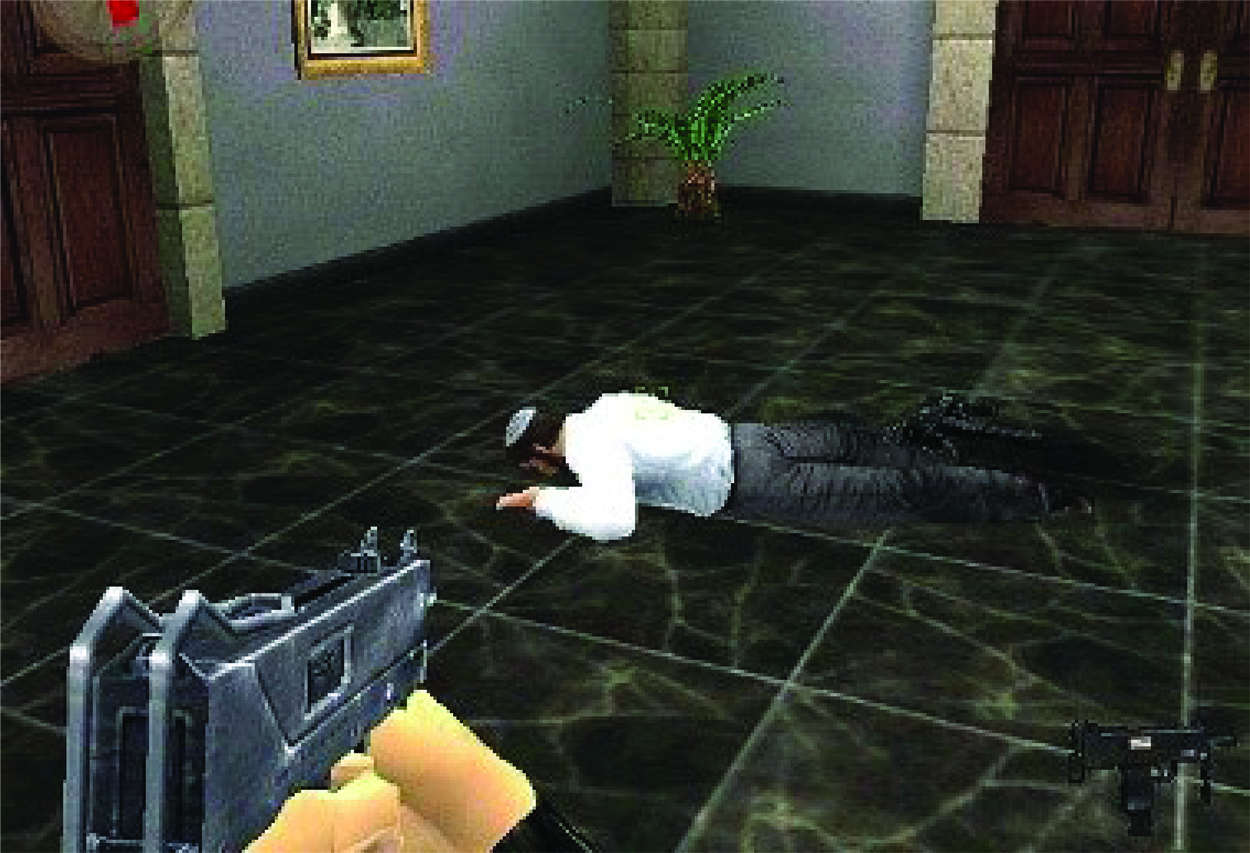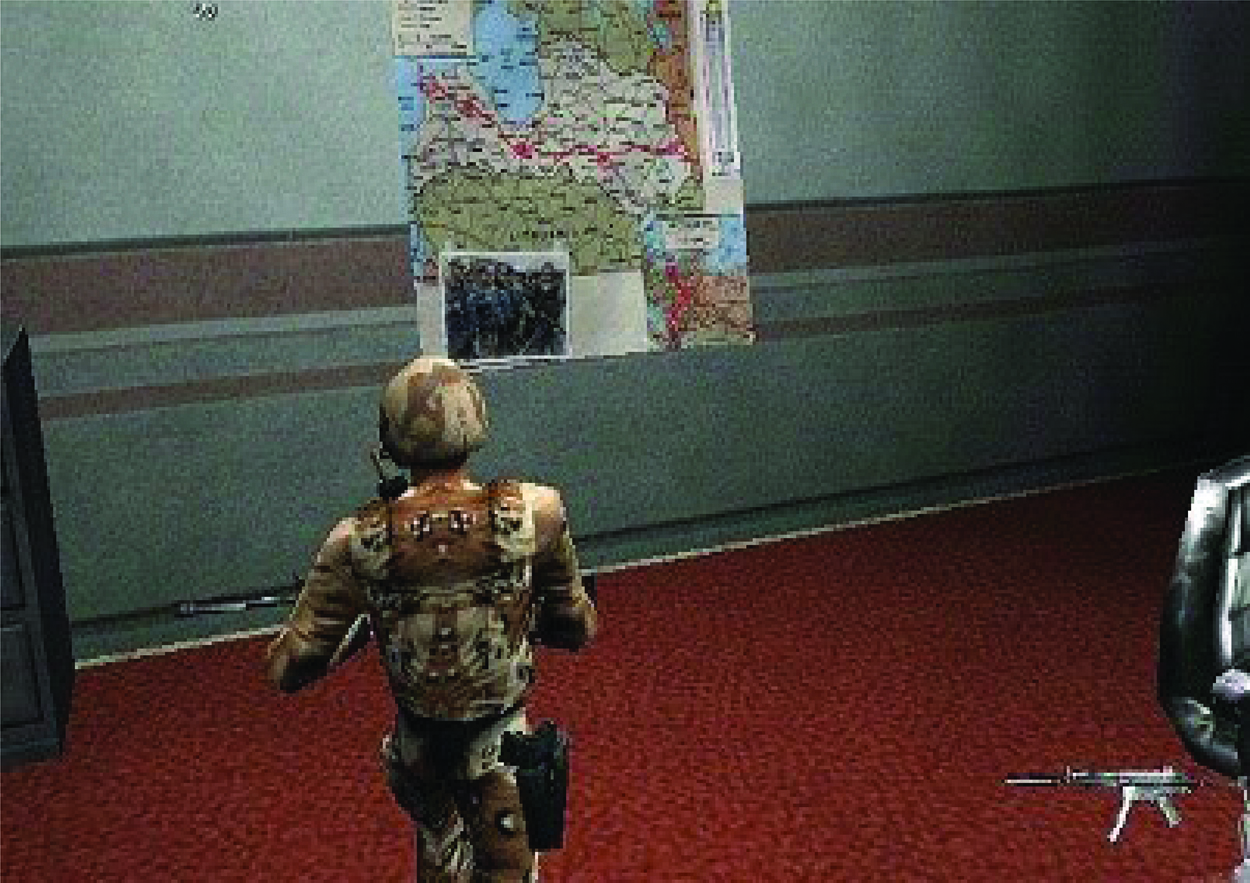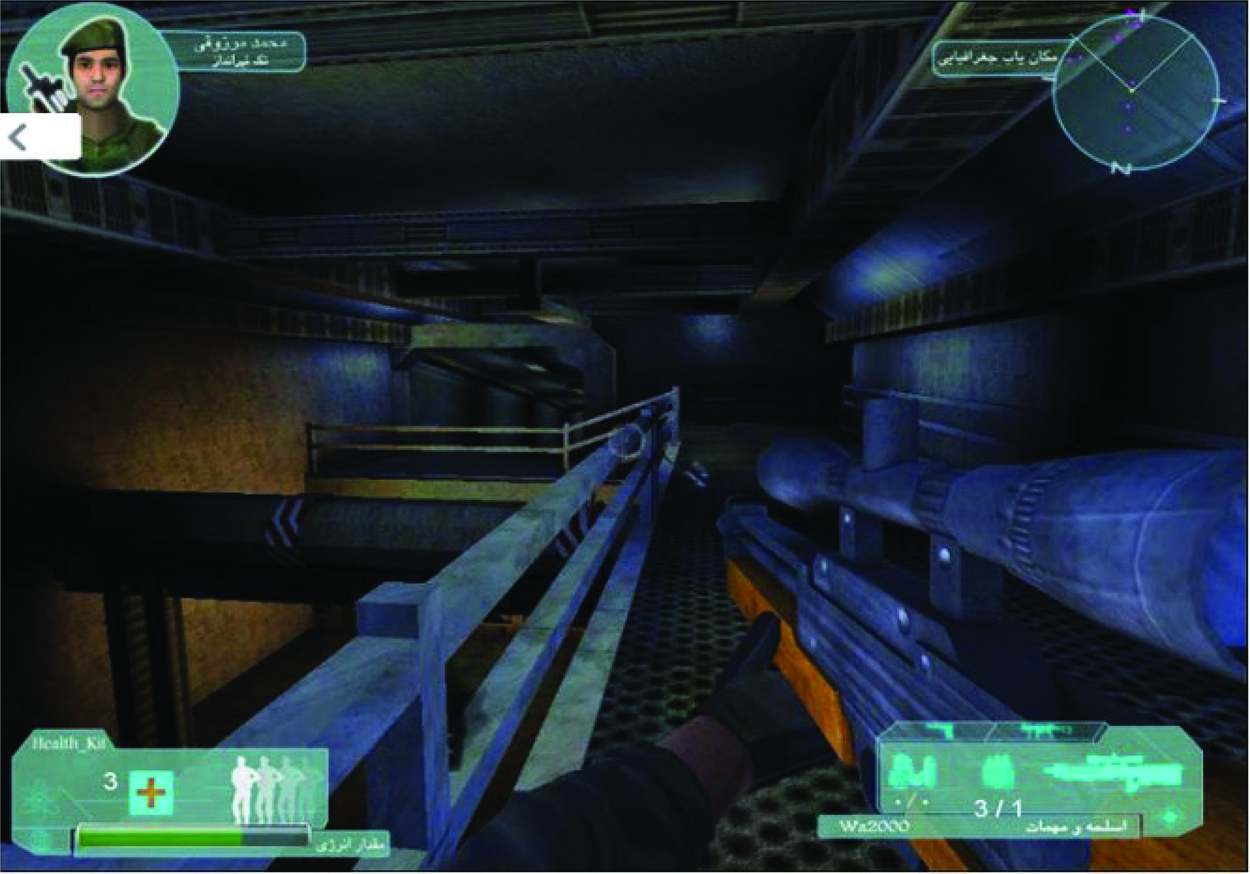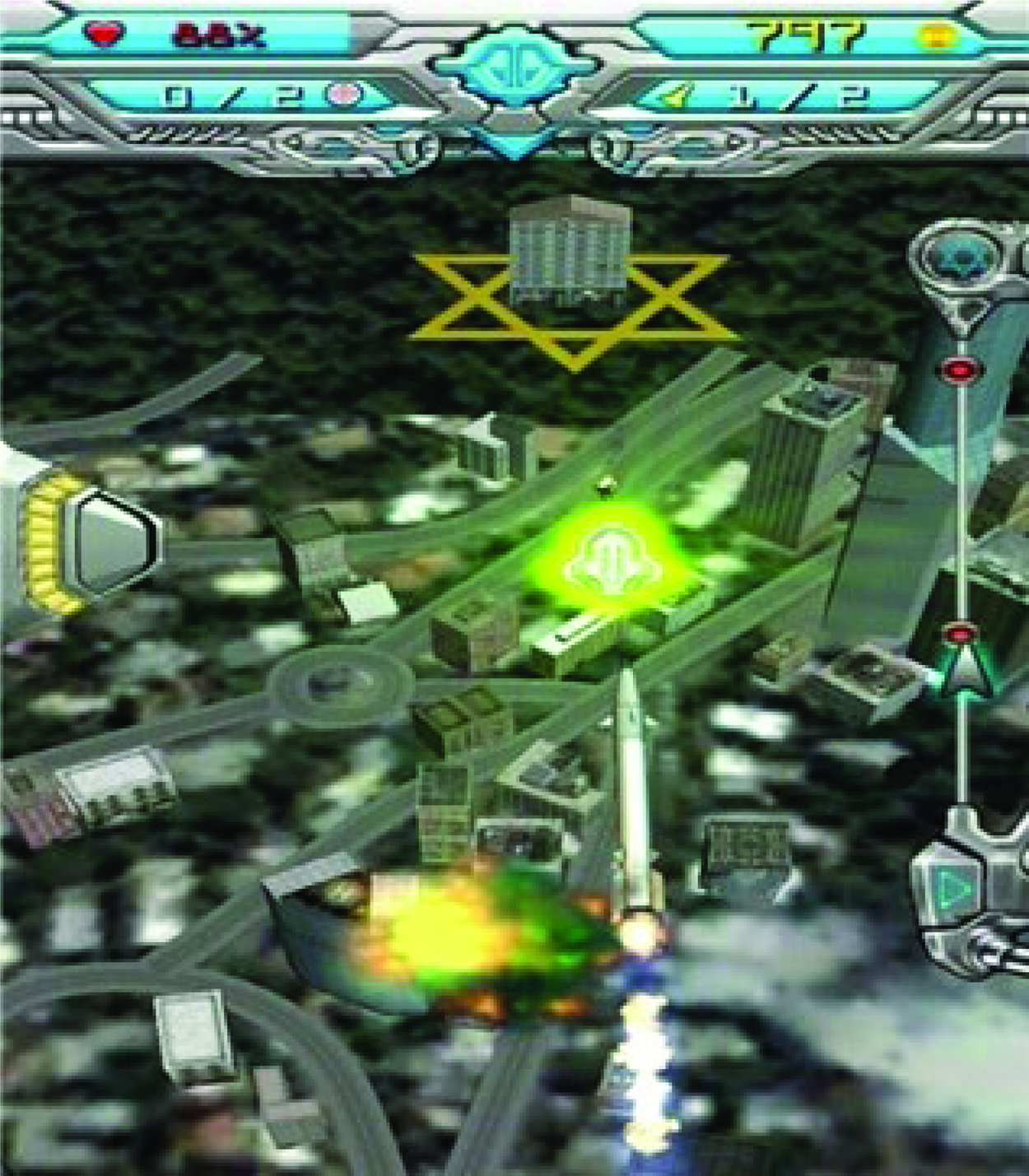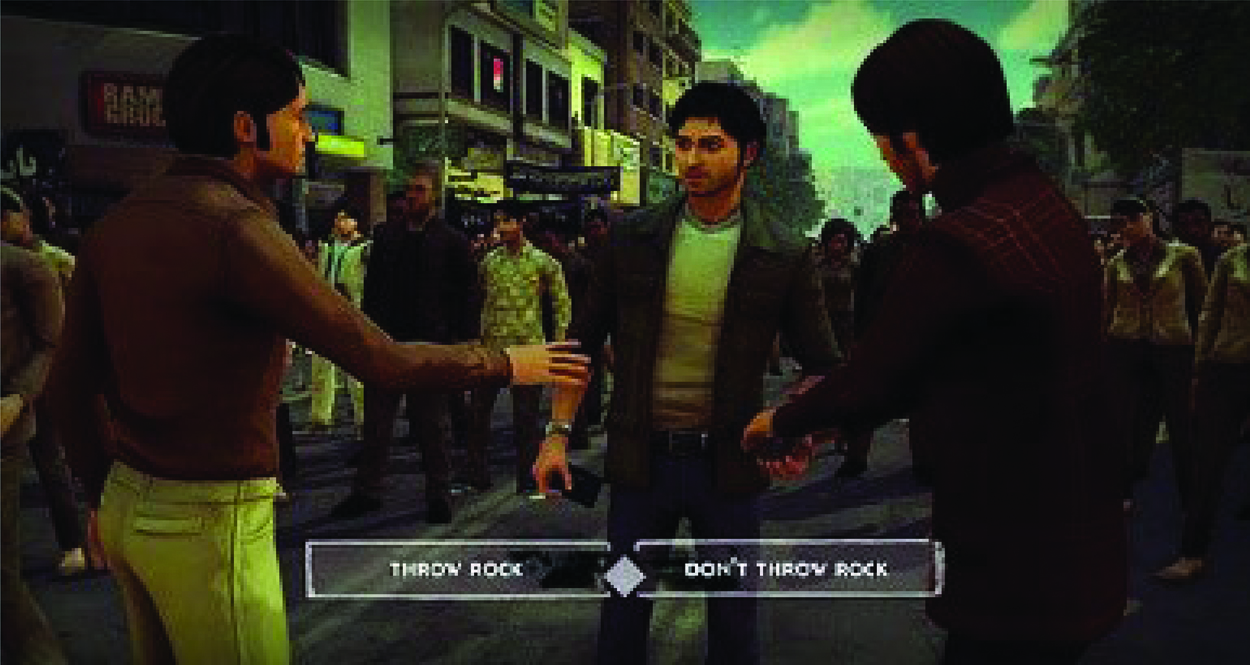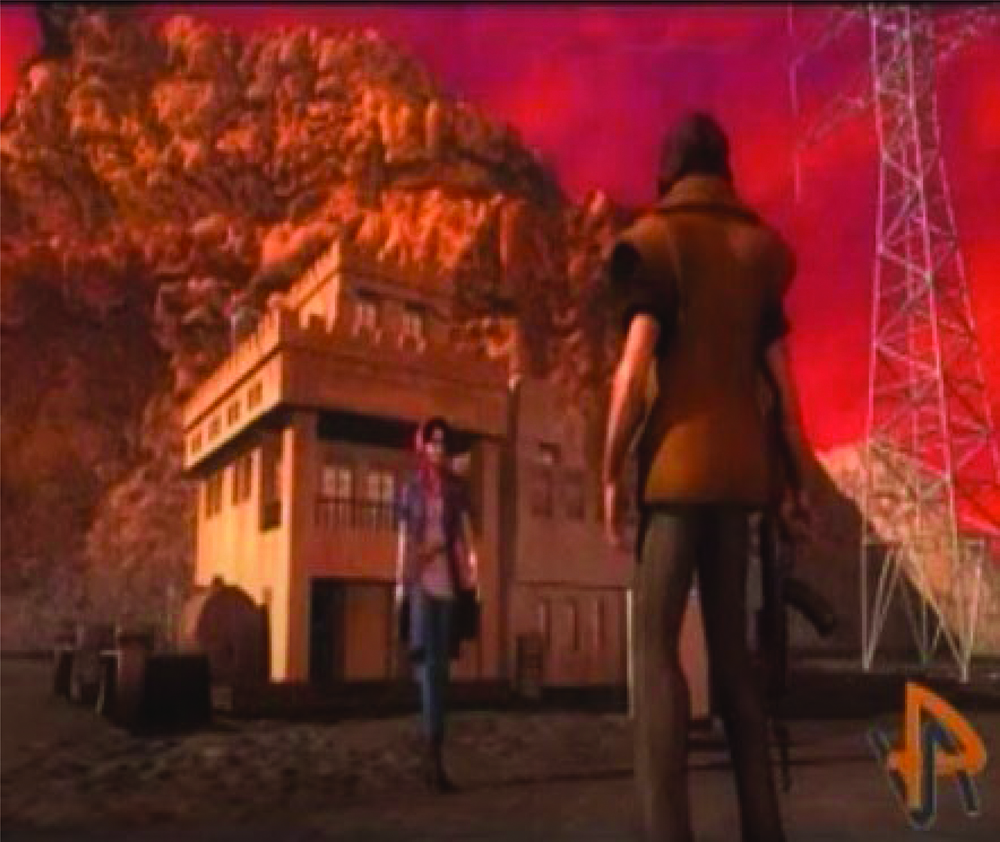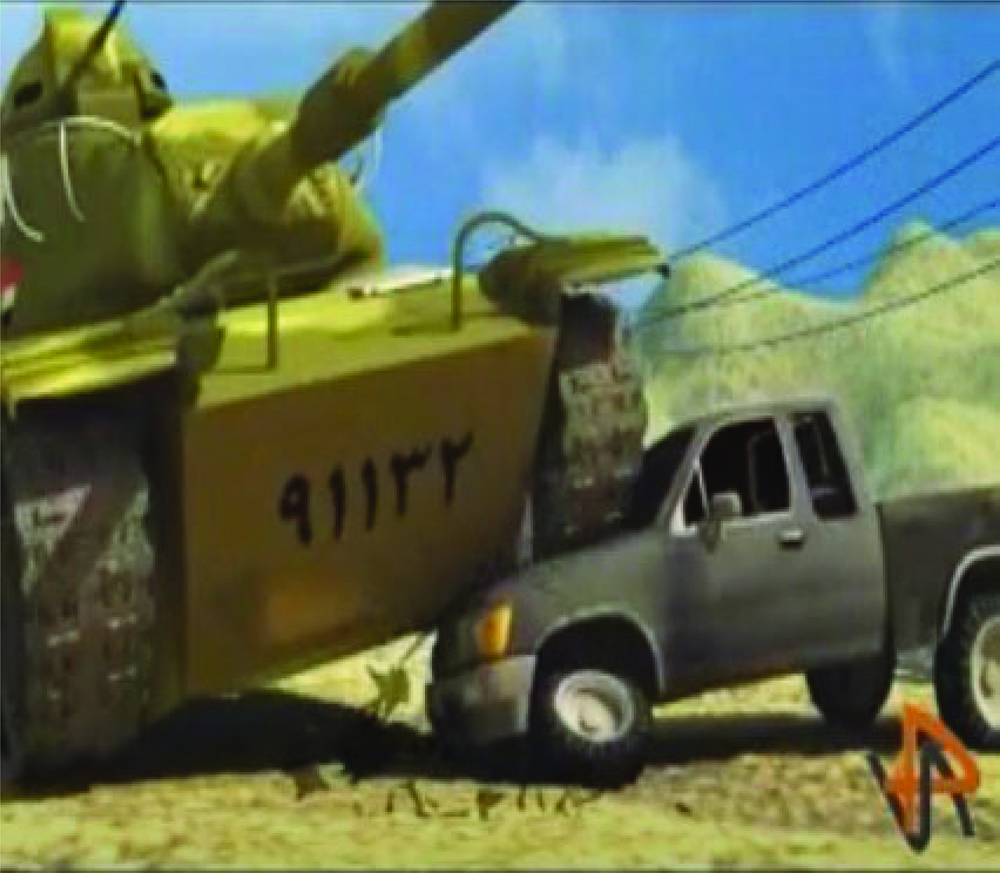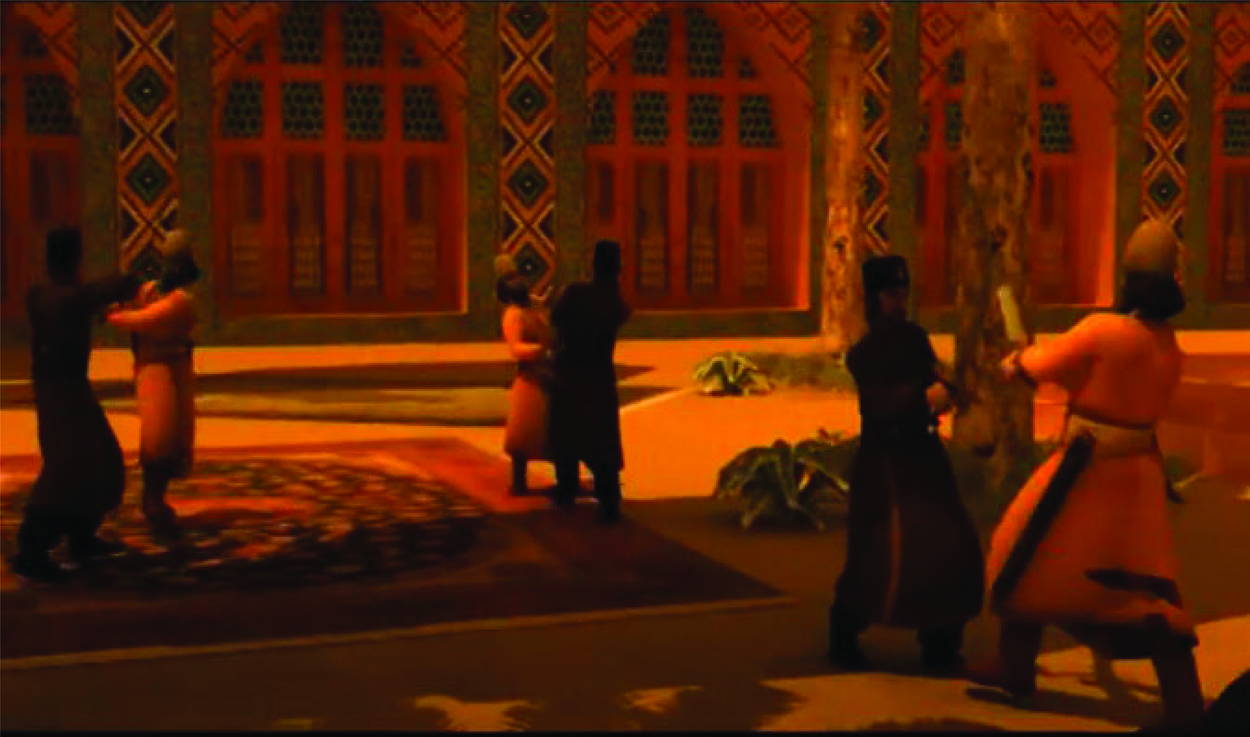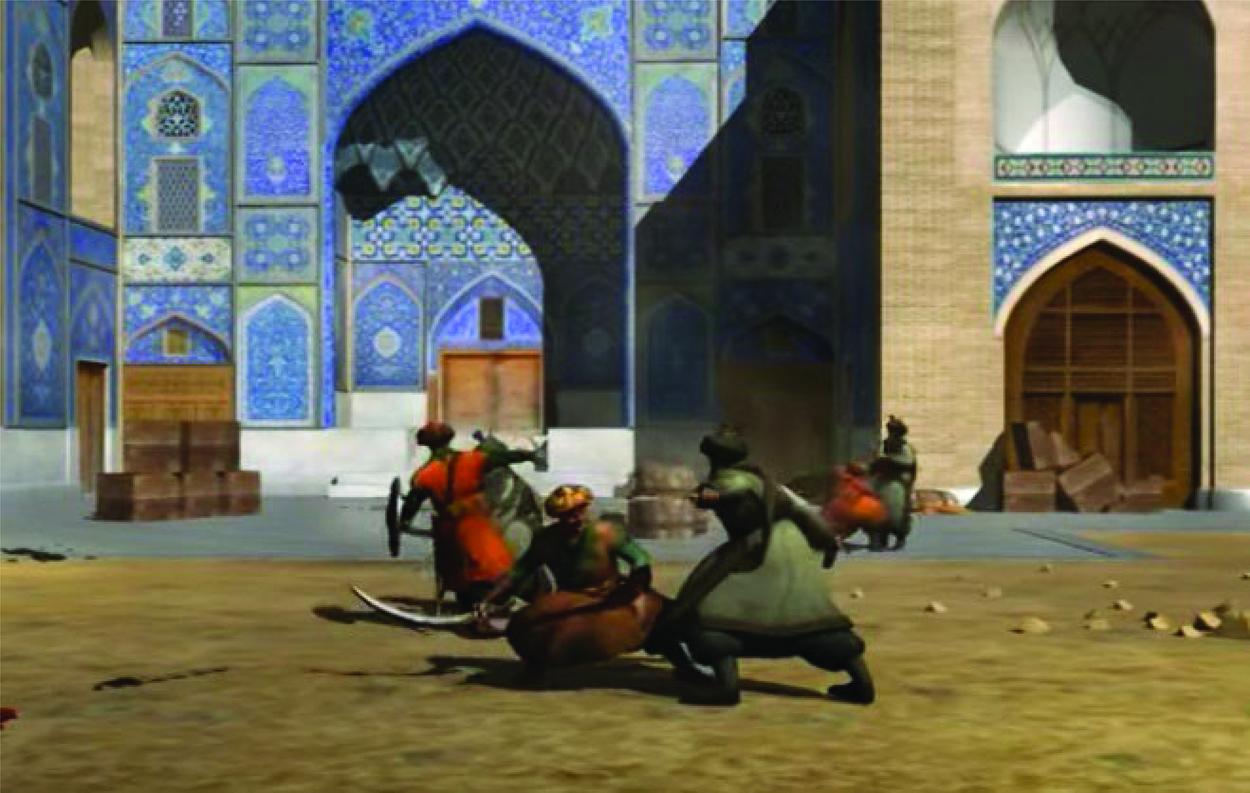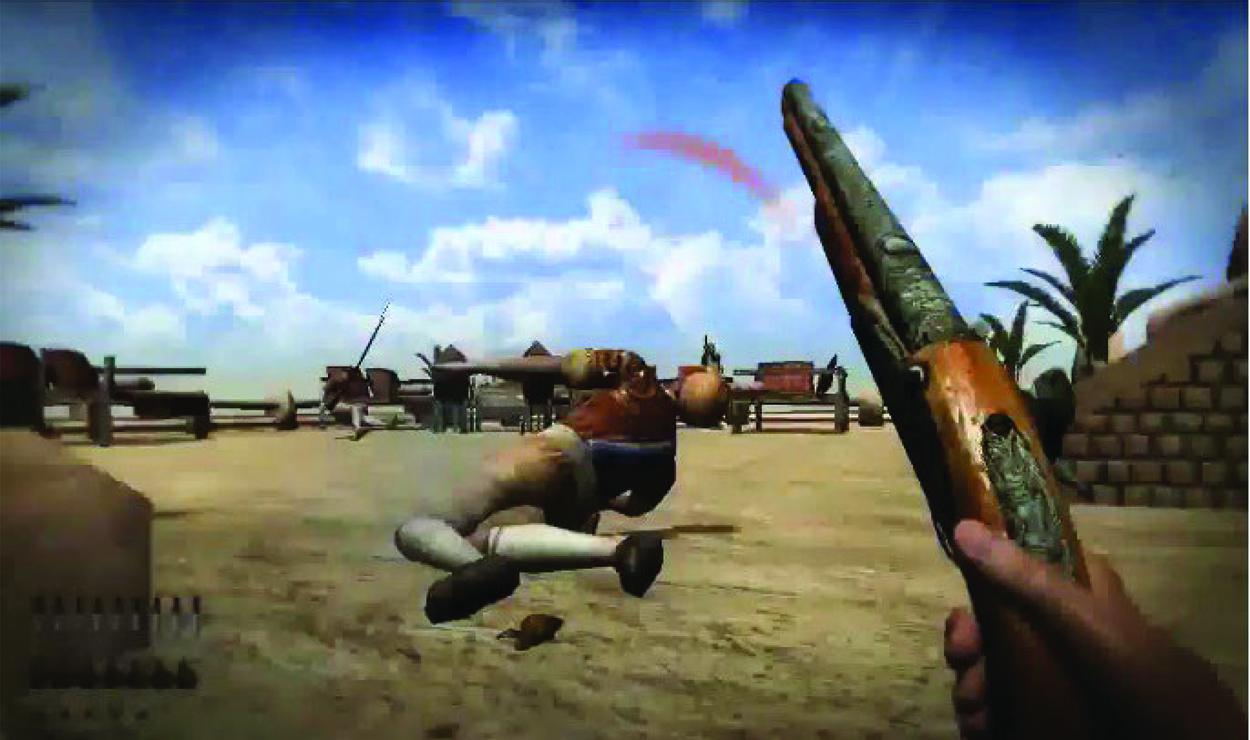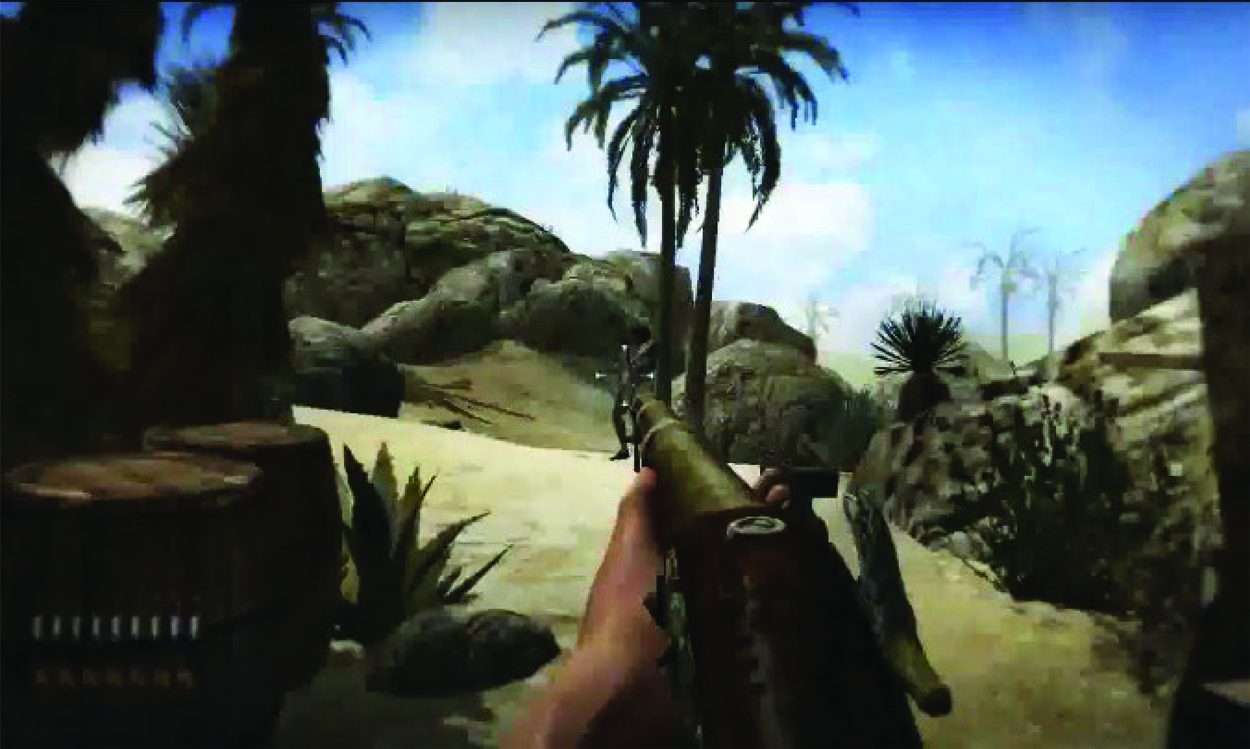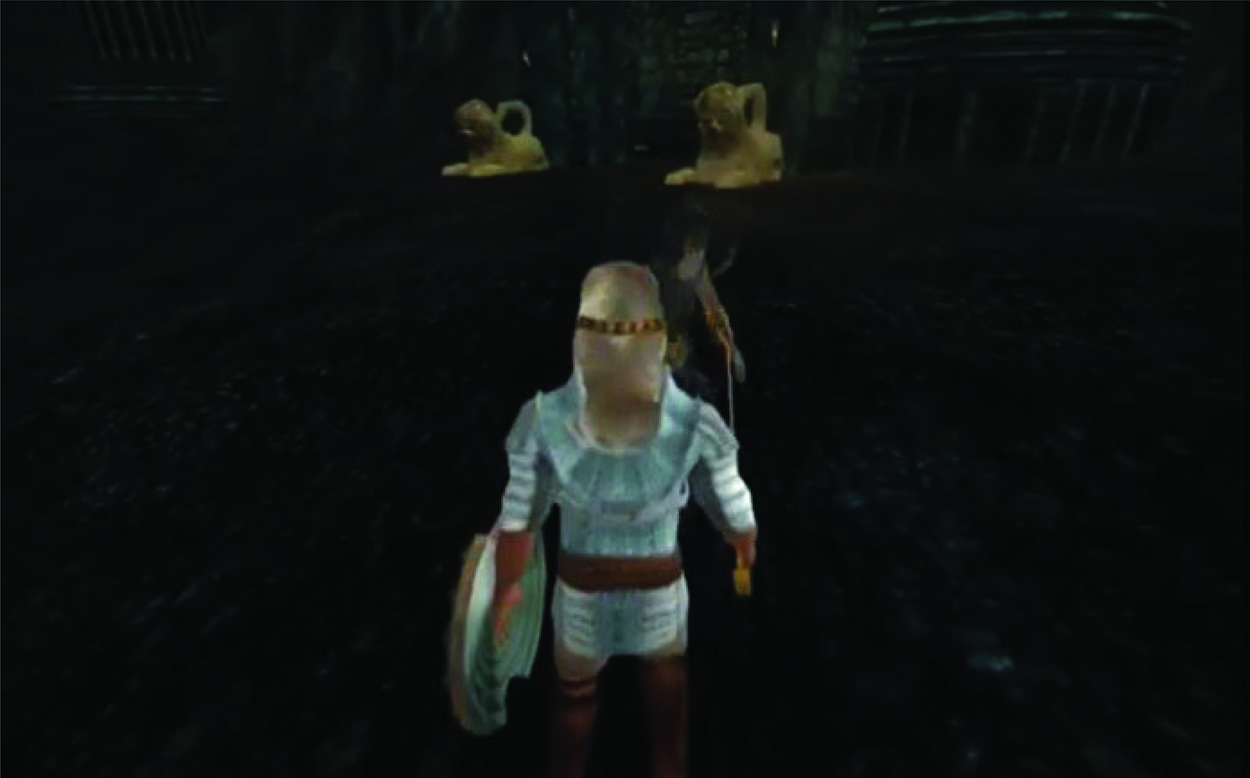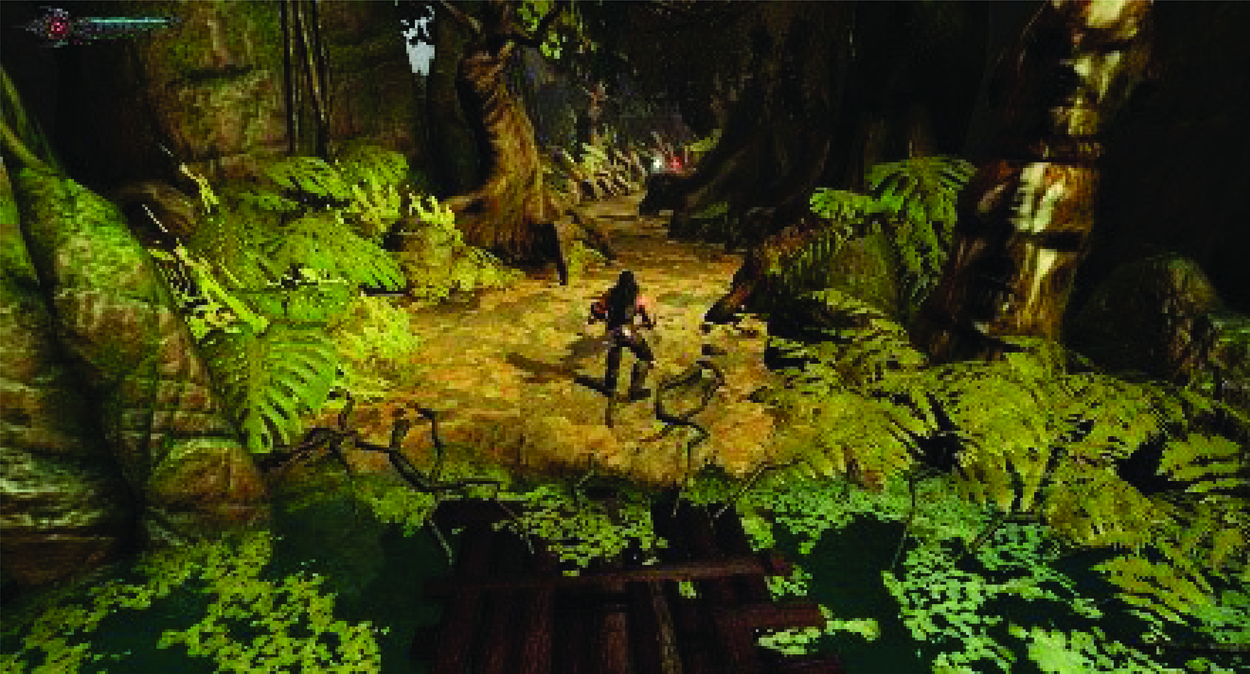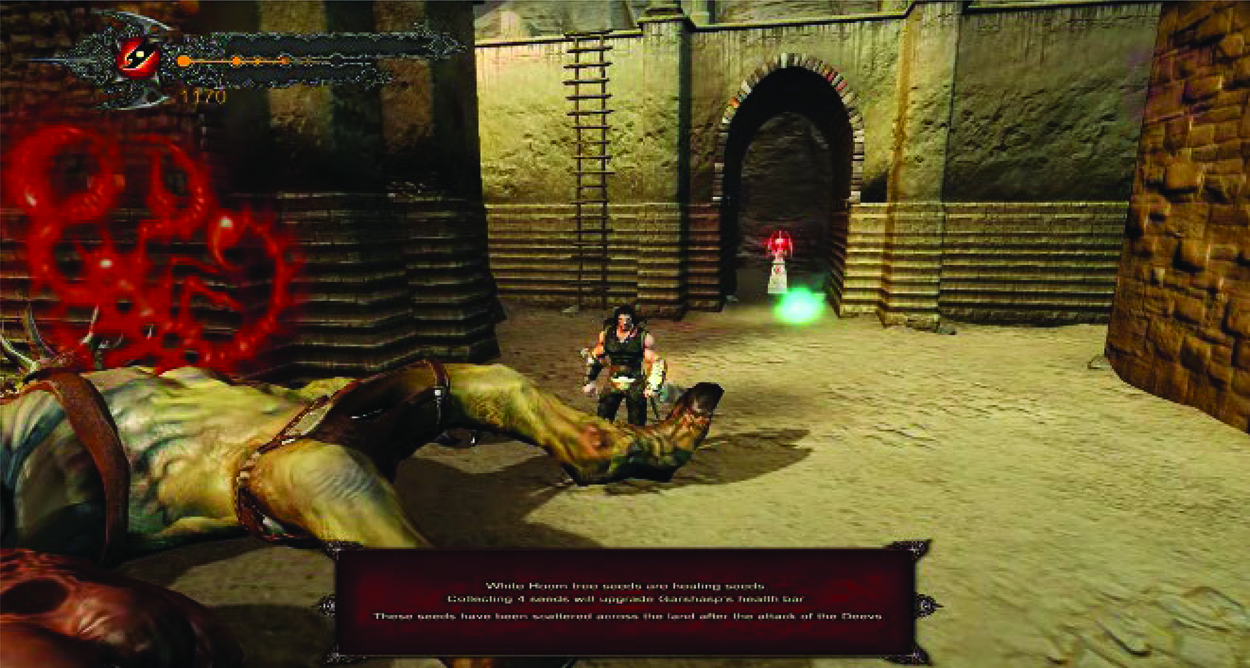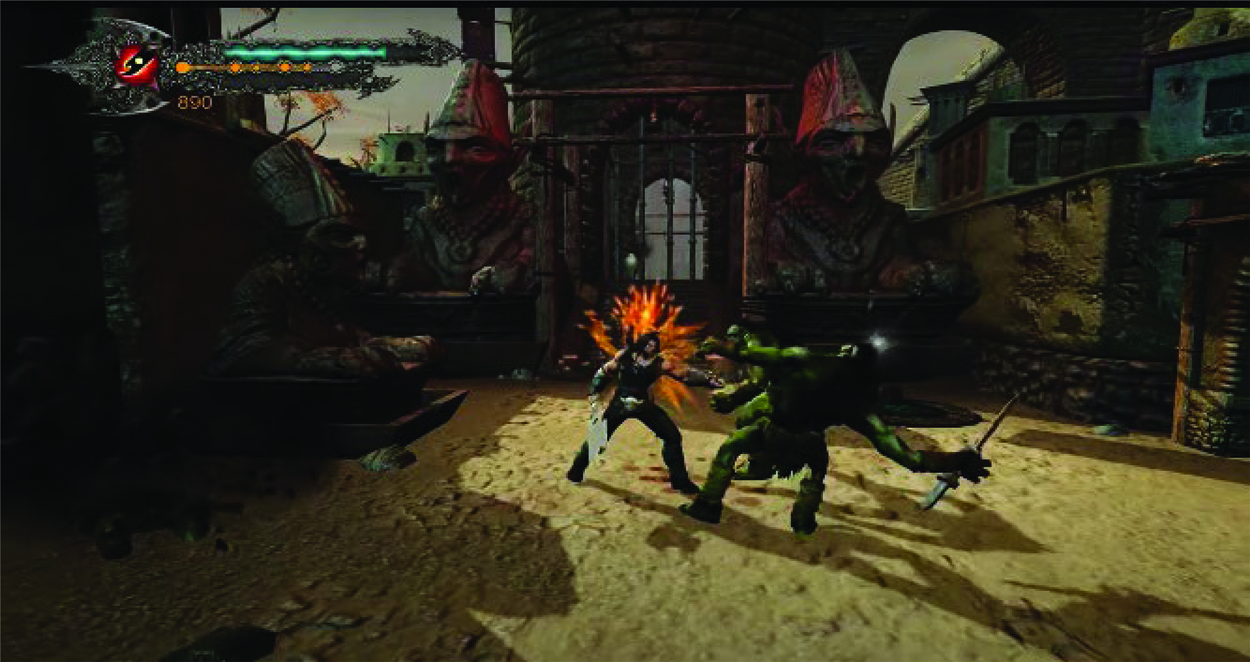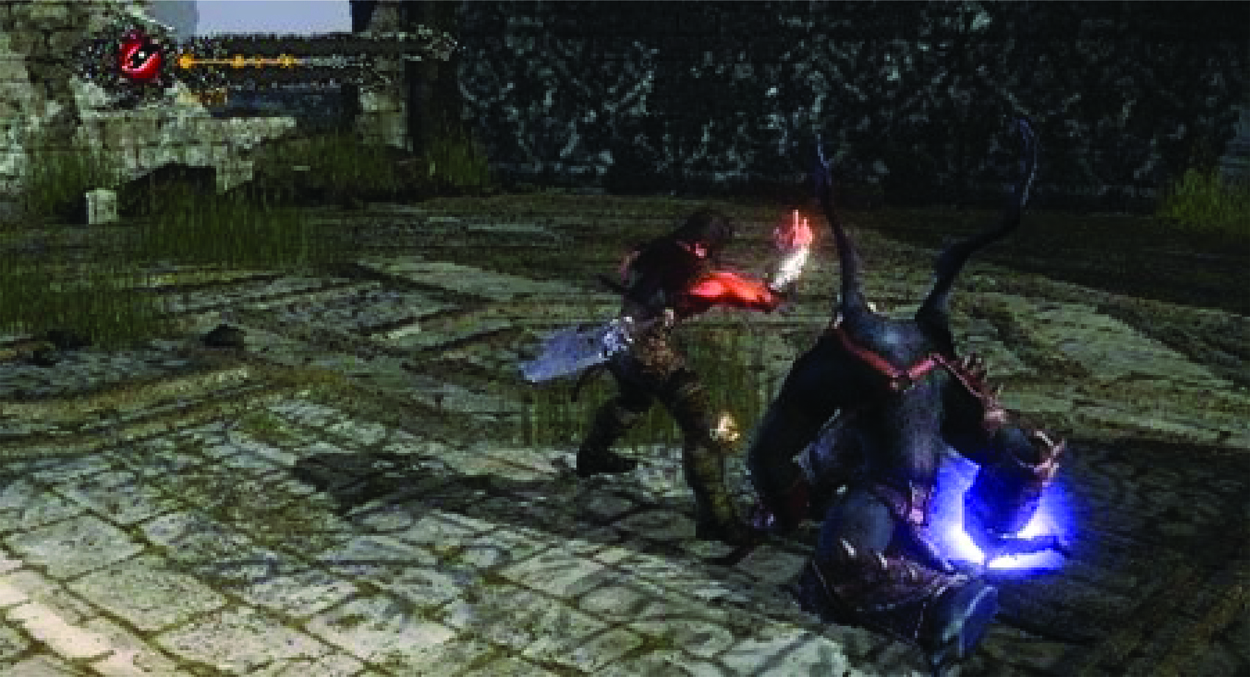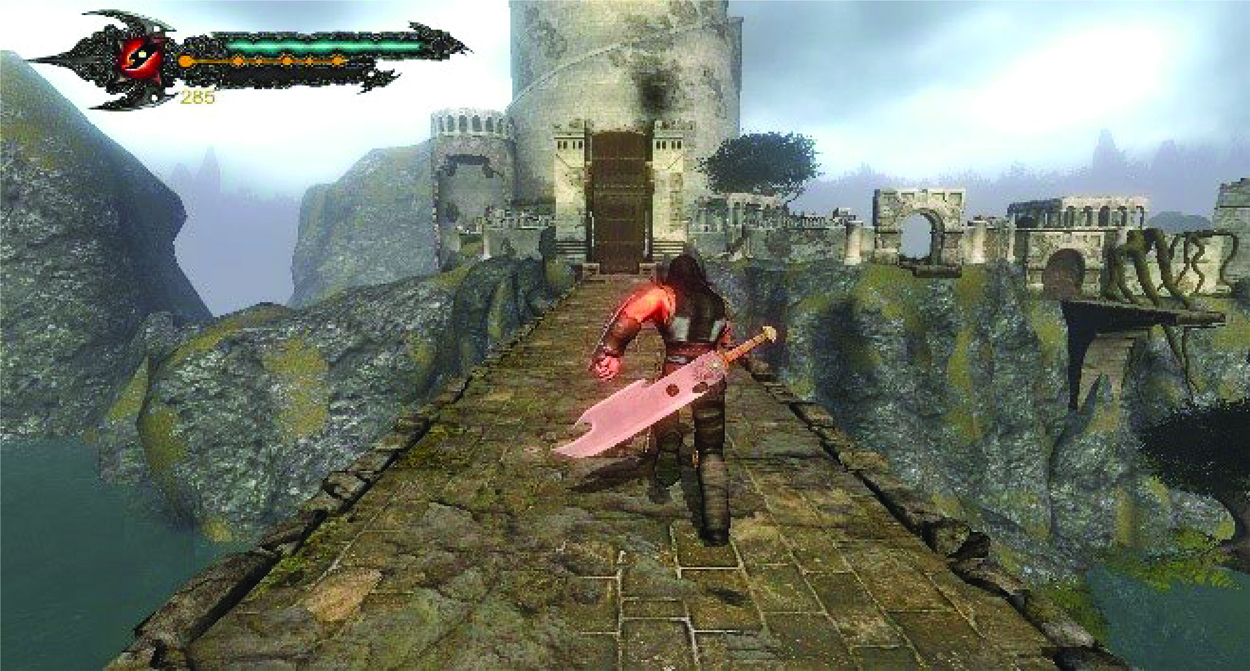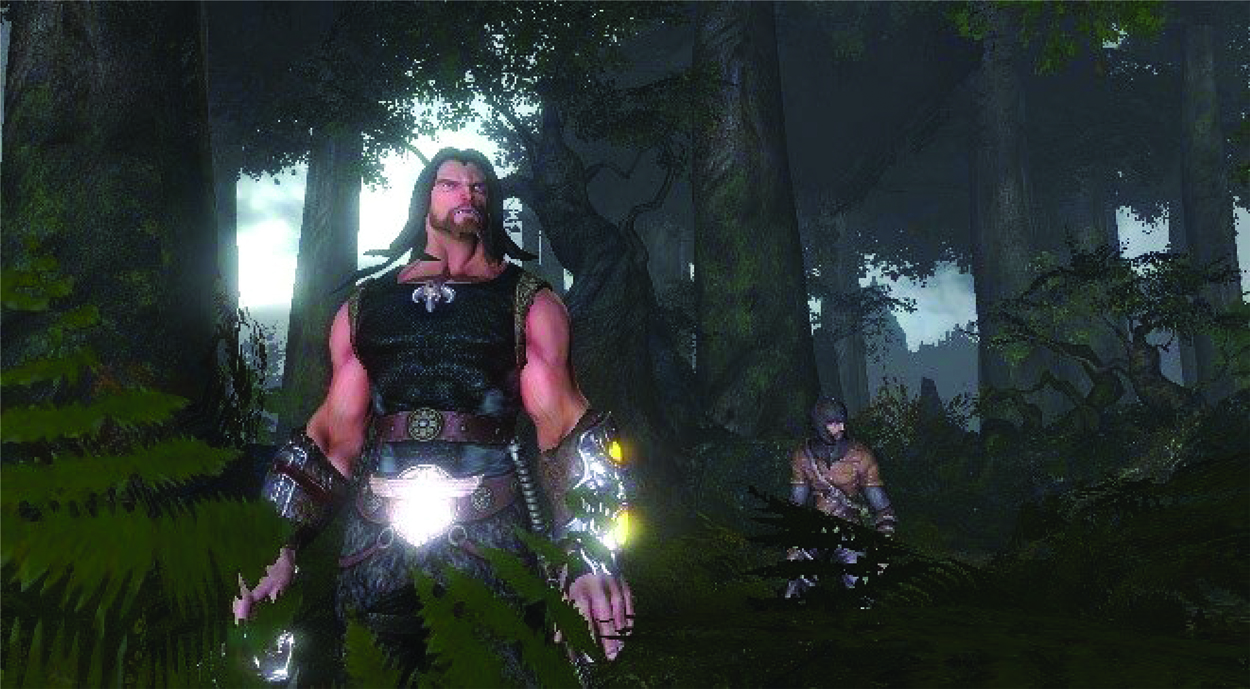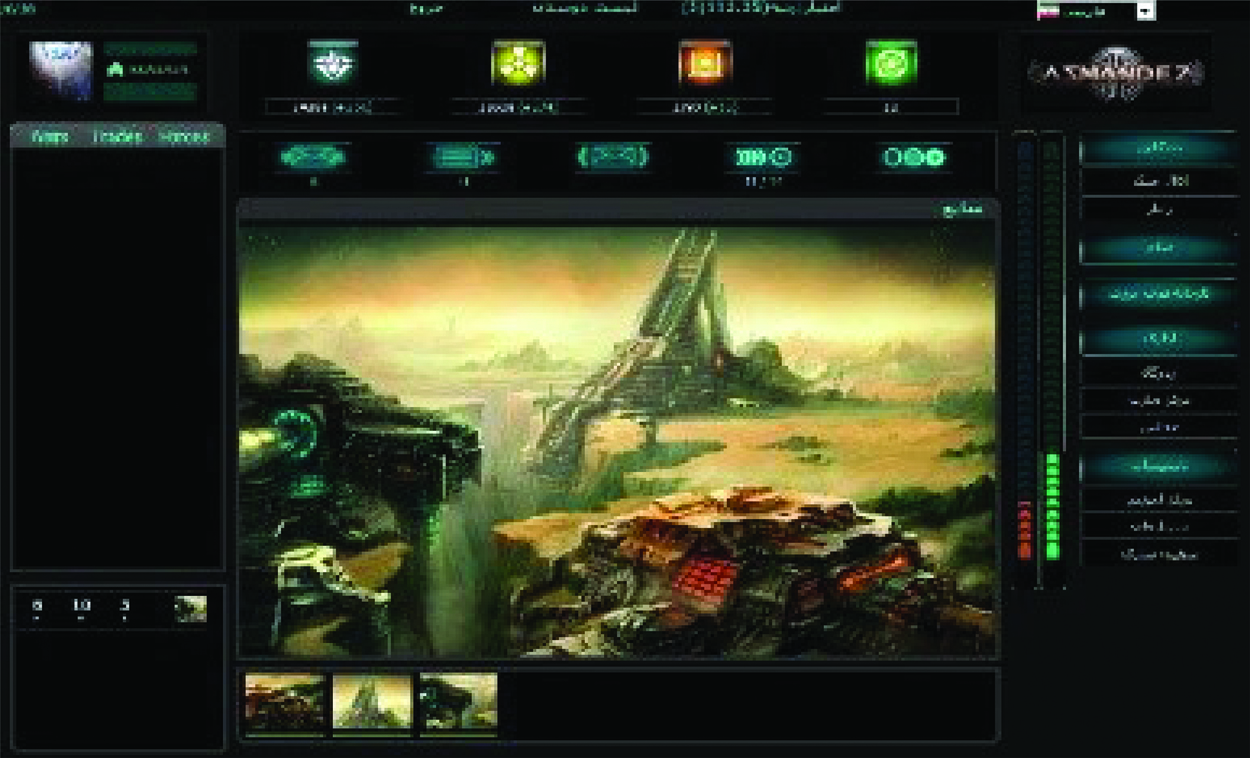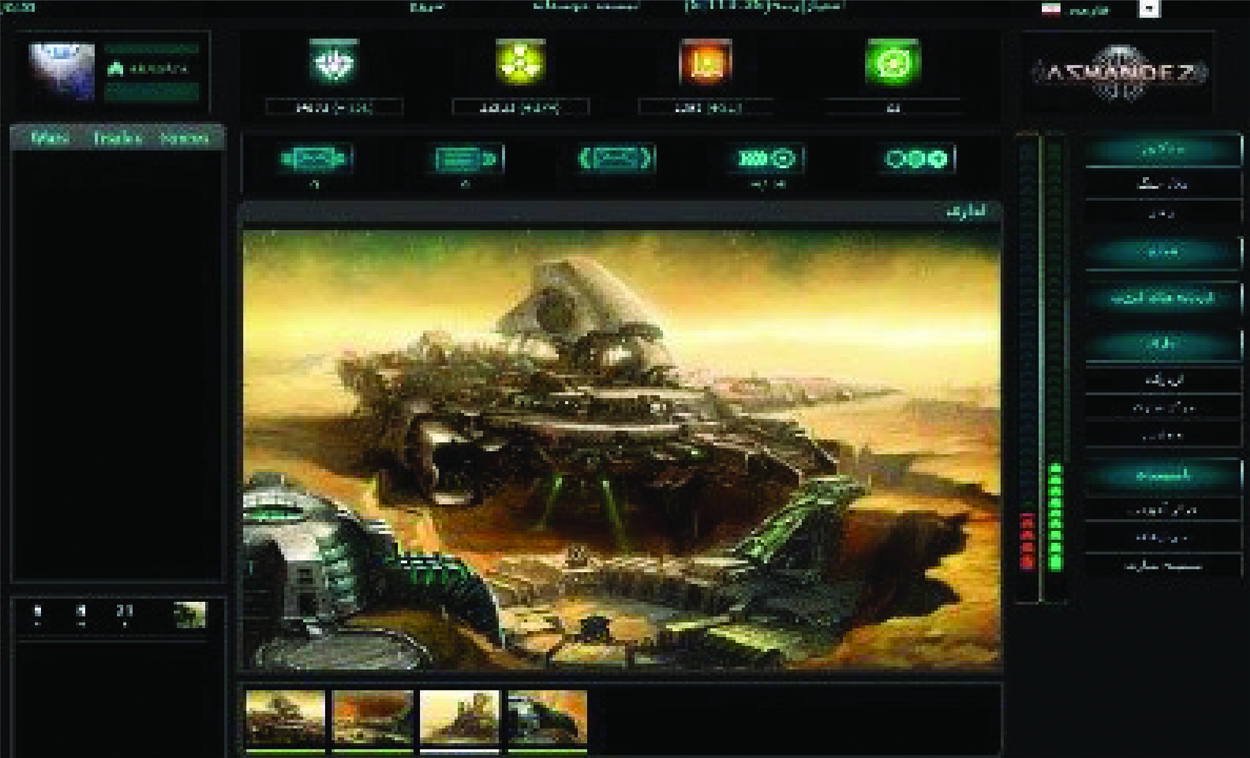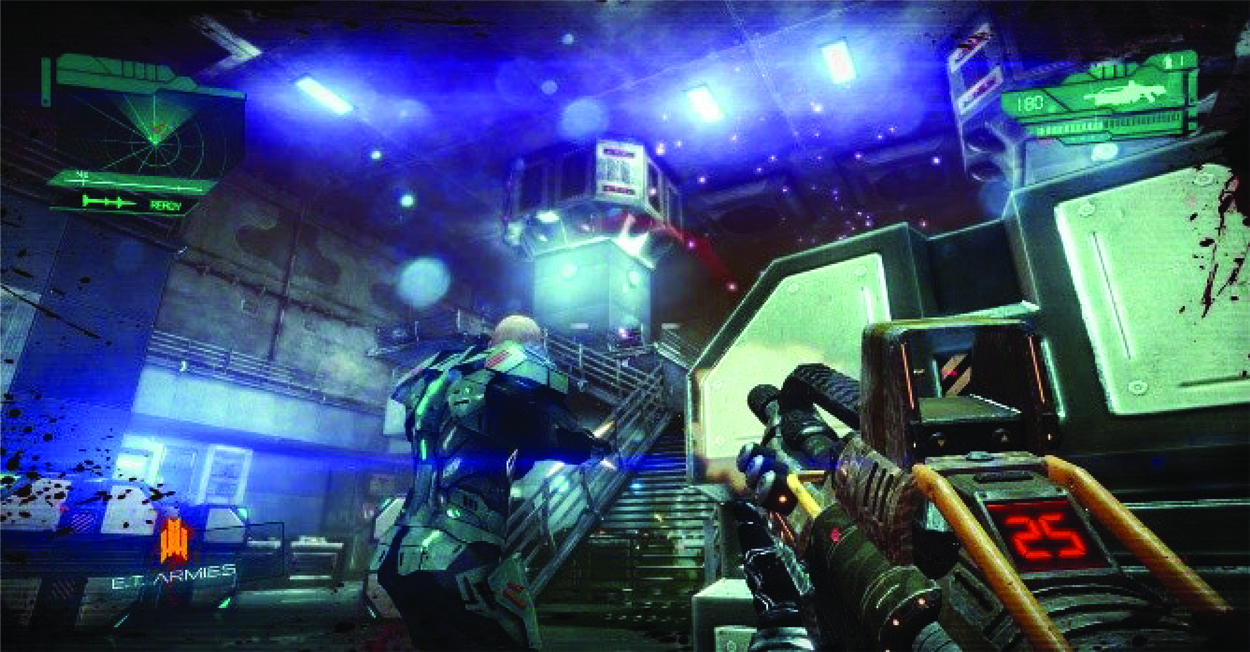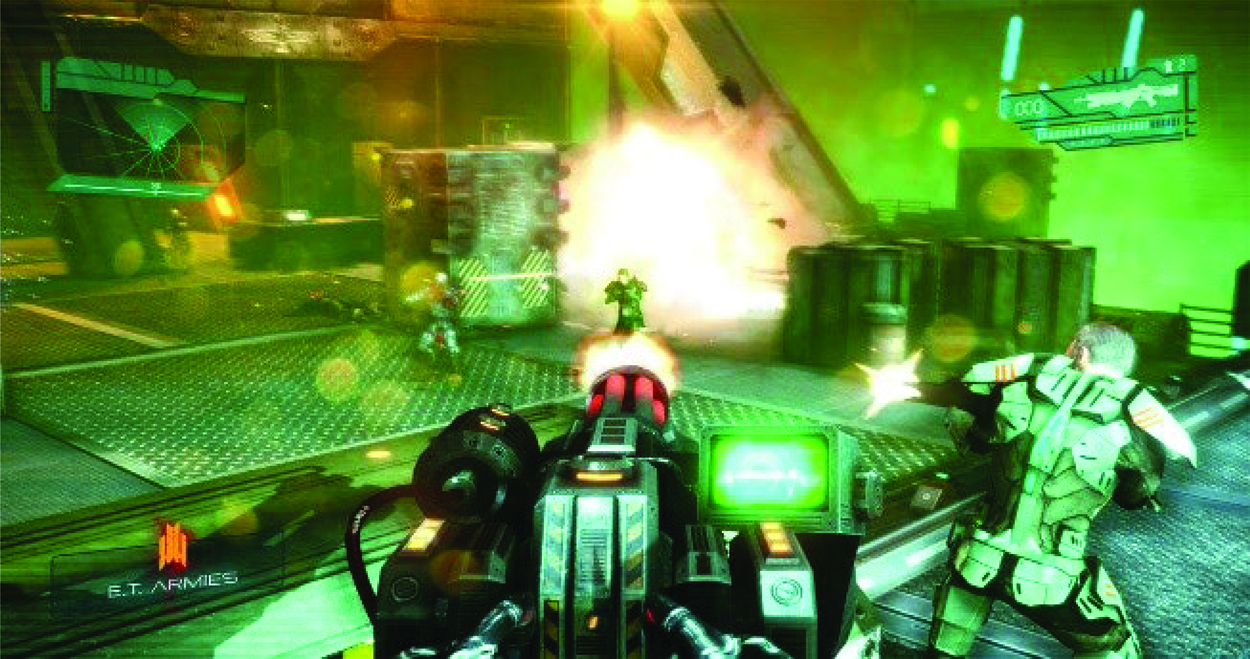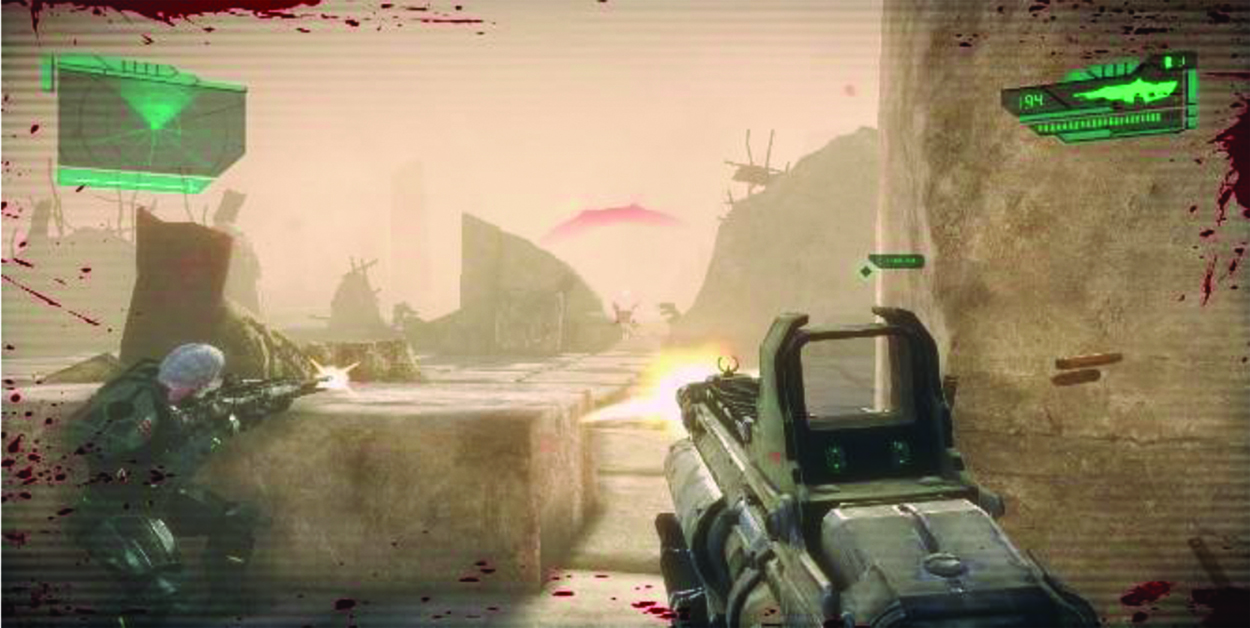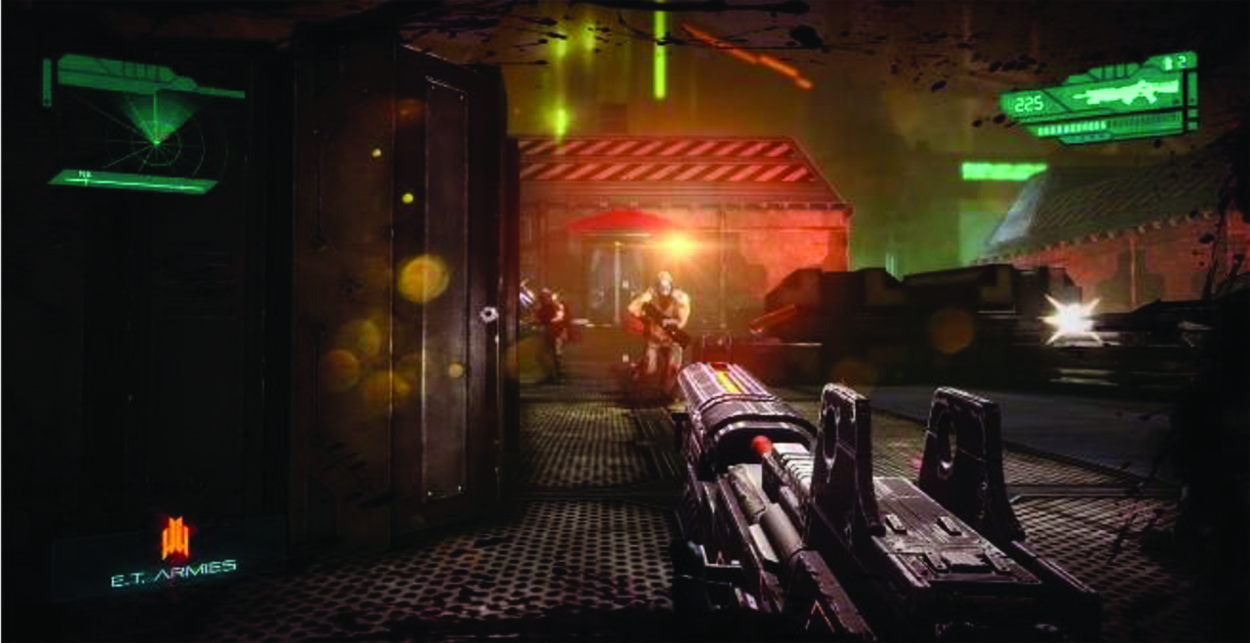Introduction
Videogames are perceived as global phenomena. While the ownership, jobs, and profits of the USD 160 billion industry are heavily concentrated in a small handful of North American, Western European, Japanese, and increasingly Chinese companies, video-games are deeply embedded within global cultures, economies, and politics. Game researchers have long drawn attention to these global circuits of culture1 that videogames find themselves caught up in: gold farmers in China,2 internet cafes in Latin America,3 outsourced special effects and animation work in India,4 and communal cultures of care in the Philippines.5
However, it is only in recent years that media industry researchers have started to pay attention to the diverse range of local contexts within which videogames are not only consumed but also produced. While the complex ways in which the local and the global intersect in media production have been extensively researched for film, television, and popular music,6 research on videogame production that explores this dynamic remains lacking. Various scholars have recently turned their attention to the political economy of the global videogame industry, particularly as it functions across different scales and between transnational contexts. Aphra Kerr’s Global Games7 maps the conduits of capital, power, resources, and labor that give shape to the global videogame industry. In Canada, researchers like Parker and Jenson,8 Joseph,9 and Whitson10 have drawn out the complex interrelation between large-scale blockbuster production and geographically specific indie “scenes.” In Australia and the Czech Republic alike, different researchers have drawn attention to how local, grassroots game industries have taken shape beyond the massive American and Japanese console manufacturers and publishers.11 Across these scholars is a call for more analyses of videogame production in local contexts that more broadly considers not just why and how people consume the products of the global videogame industry but why different people around the world make games, for what reasons, in what contexts, under what conditions, and with what resources.
Accounting for local videogame production cultures, not just consumption cultures, is crucial to challenge homogeneous, preordained conceptualizations of “the global videogame industry” that are too narrowly imagined on the terms of the large, blockbuster studios of North America, Western Europe, and East Asia. Adequately accounting for videogame production globally requires us to situation “the industry and culture of digital games firmly within local and regional economies and societies”12 and to place a “greater focus on sociocultural conditions in order to examine better local industry dynamics.”13 In this article, we argue that if we are to truly appreciate a “global videogame industry,” we need to account for the plurality of local videogame industries that function under different local conditions, within different value-regimes, at different scales of formality, which consist of actors who often have conflicting and ambivalent feelings about being part of an ostensibly “global” videogame industry at all.
In particular, we look at the case of videogame development in Iran to highlight the complex ways in which videogame developers of a local industry navigate cultural, political, and legal frameworks to sustain their sense of local cultural identity while also trying to access global (and predominately Western) marketplaces. What we ultimately find is an ambivalence among Iranian videogame developers where they have not only aspirations for global commercial success but also reservations toward the Western ideals and narratives that dominate the global videogame industry’s most lucrative genres. The Iranian videogame industry is not, we show, merely one part of a homogeneous global videogame industry but one locally emergent and globally connected industry among many that is forever mediated by and in tension with local perceptions of what the global videogame industry fundamentally is.
In the first section, we provide a more in-depth literature review of the recent range of publications that have called for more studies of local and translocal videogame development in order to account for a broader spectrum of videogame development cultures than have been traditionally accounted for in conceptualizations of the videogame industry. What the researchers in this section identify is the need for empirical accounts of different local contexts that complicate top-down and Western-centric understandings of how the global videogame industry functions.
Next, the article turns to the Iranian videogame industry specifically, providing a brief history of the country’s videogame production and the challenges Iranian developers face, such as lax copyright laws, tensions around cultural identity, government regulation, and the difficulty of interacting with Western institutions and platforms. Here, we demonstrate how, counterintuitively, the lack of legal access to blockbuster Western videogames led to their extensive availability through informal pirating and sharing economies, leading to a subsequent devaluing of lower-budget Iranian videogames for both domestic and foreign audiences.
The final section, then, turns to specific genres and examples of Iranian-produced videogames that sit in the tensions between local cultural identity and the forces of Western videogame markets and dominant industry companies and discourses. Through the genres outlined in this section, the ambivalences of Iranian developers in relation to an imagined global game industry are most pronounced. At the same time, Iranian developers wish to produce games of similar standing and fidelity as their Western counterparts, but also to counteract the othering narratives of Iranian and Islamic culture present in many Western blockbuster games. Across this article, we ultimately see how perceptions of the global videogame industry both mediate and clash with localized modes of videogame production.
Our analysis is based on public statements made by Iranian videogame developers about their practice, published government texts, and one author’s first-hand experience as an active member of the Iranian game industry. Our data was gathered over nine months from English and Persian (Farsi) sources, including, but not limited to, developer, organization, and institutional websites and documents published by institutions such as the Iran Computer and Videogames Foundation (IRCG) and Soft Technology Development Council, as well as related journalistic coverage of local Iranian-made videogames. The local author also attended industry events and conferences in Shiraz and Tehran, which was valuable for recognizing local scenes in progress and building rapport with game developers, industry experts, aspiring amateurs, and hobbyists across the country.
The Global Videogame Industry and Local Videogame Industries
Two key anthologies have been crucial to game studies adding nuance to its global frame of reference in recent years: Videogames Around the World14 and Gaming Globally.15 Each of these anthologies provides a range of case studies to focus on different videogame consumption and production cultures in different parts of the world. In this article, we are particularly indebted to the respective case studies performed by Ahmad Ahmadi and Vit Šisler on Iranian and Middle Eastern game development in these anthologies. In the introduction to Gaming Globally, Huntemann and Aslinger note that while videogames have become globally “ubiquitous,” “developers are creating more local, niche, and individualized experiences, [and] players are finding their way to games from faraway places.”16 Videogames have “become global,” but in an asymmetric and heterogeneous sense: not as a single form of text or practice, but as a rich tapestry of interwoven local development and distribution contexts.
In an extensive mapping of the global videogame industry, Aphra Kerr echoes this sentiment. While Kerr’s focus is on the “global” videogame industry, what her analysis ultimately finds is the significance of local conditions and contexts in understanding how videogame industries take shape in different locations: “We must be careful to empirically explore how the game industry and game sales are shaped by local investment, regulatory and cultural conditions.”17 Kerr details how the games industry itself “foregrounds a discourse of technology and globality” even as it is “dominated by North America and Japanese business practices and cultures” and calls for more local analyses that challenge this dominant discourse.18
Indeed, these ostensibly North American, Japanese, and Western European multinational corporations have long relied on global networks of production. For instance, blockbuster “triple-a” console titles have long been co-produced across multiple studios, often located in different countries. Programming and VFX work is often shipped “offshore” to companies with cheaper labor, such as India, the Philippines, or (before the Global Financial Crisis) Australia,19 which in turn receive little or no recognition for their labor on the credits of the final product. Further, those local game studios producing games for other than the dominant consumer platforms, such as the major home consoles or Valve’s Steam marketplace for PC, come to be seen as second-tier industries lacking the prestige or cultural capital of a “first-party” Sony or Nintendo release.
Kerr highlights how, within this dominantly North American and Japanese but ostensibly global industry, local variations such as cultural differences, resource availability, government support (or lack thereof), tax regulations, internet access, and adjacent cultural scenes influence the local production and consumption of digital games. Similarly, Izushi and Aoyama20 look at the particular histories and formations of the Japanese, UK, and US game industries to demonstrate how “the interplay of economic, social, and technological factors, in turn, develops a particular techno-industrial path dependence, thereby affecting a country’s global competitive position.”21 Thus, “to understand game production networks, one needs a multiscalar and socio-spatial approach.”22 That is, the interrelations and intermediations of the global, national, and local need to be accounted for to understand how videogame development actually operates in a particular place.
This has become particularly crucial since the mid-2000s as the phenomenon of platformization has seen videogame development and become available to a much wider range of scales of production and distribution.23 The unequal rise of high-speed internet and cheaper development tools gave rise to “indie” and “mobile” videogame development, making it easier for smaller development teams located throughout the world to capture large new demographics of players without the assistance of a publisher. As Keogh24 notes, videogames have shifted from a period of “aggressive formalization,” where the North American and Japanese console manufacturers determined the shape and narrative of the formalized videogame industry, to one of “intense in/formalization” where professional developers, amateur game makers, and a wide range of actors, platforms, and other stakeholders intermingle and compete to produce the current multiscale and translocal field of videogame production.
A number of scholars have, in recent years, taken up the call for socio-spatial approaches to understanding game development, albeit primarily in North American and European contexts. In Canada, a range of theorists have used ethnographic approaches to interpret the constitution and dynamics of local indie game scenes and commercial studio cultures in different Canadian cities,25 and the mediation of different platforms, companies, and technologies on these scenes.26 In the Nordic countries, work has been done on the nascent industry, focusing on the emergence in recent years of dominant players in the mobile field, such as King and Supercell, and how this industry emerged, in large part, from a more informal demoscene.27 In Australia, researchers have been tracking the aftermath of a near-exhaustive industry collapse that saw a grassroots “indie industry” emerge from the ashes.28 Work is also beginning to emerge looking at the shifting development cultures of other geographic regions such as South-East Asia29 and Eastern Europe.30 As such, social histories of videogame development in different parts of the world are gaining more traction, complicating the oft-repeated legacy-building narratives of companies such as Microsoft, Ubisoft, Tencent, Nintendo, and Sony.31 Across this growing body of research, we see how the seemingly homogeneous and global videogame industry is in fact an emergent amalgam of intertwined local videogame production cultures.
Of course, this makes perfect sense when one considers videogames as not simply a commercial industry but as a cultural field.32 Just like film, music, or literature, videogame production is a cultural field constituted by different scales of formal and informal production, and the contesting of various forms of capital (economic, cultural, political, social).33 Accounting for the full richness and complexity of videogame production around the world requires research that is careful not to flatten the lived experiences, ambitions, and challenges of videogame creators in different local contexts into commercially determinant notions of “success.” For instance, in our discussions here, not every Iranian developer is necessarily trying to achieve commercial success in Western markets. However, at the same time, the ease of access of Western titles within Iran inevitably ensures Iranian-made games are in conversation with and evaluated against these titles, whether the creators wish them to be or not.
What emerges as a common theme across this literature is the fact that videogame development cultures are beholding to local social, political, and economic conditions. Beyond the campus-sized and anonymous studios of Ubisoft, EA, and the other blockbuster publishers that take advantage of shifting tax conditions to move entire studios (but not necessarily their staff) across borders, a vast underbelly of developers, artists, students, and others create videogames for a range of reasons in a variety of contexts with different goals and different relationships to the dominant industry. In each locale, a vast array of variables from government policies, local scenes, geography, skill transferability, and the presence or absence of corporate actors, social welfare systems, and many others impact the shape, flavor, identity, culture, and politics of local game production. It determines who makes videogames, why they make them, for what audience, under what conditions, and with what resources. To demonstrate this, we now turn to the Iranian videogame industry.
The Formation of Iranian Videogame Development
The modern history of the Iranians’ engagement and interaction with Western culture and products goes back to before the Islamic Revolution of 1979 when the Pahlavi Shah of Iran had close economic, political, cultural, and social ties with European and American countries.34 However, the dawn of the Islamic state in the 1979 revolution put the Iranian government in a politically hostile and suspicious relationship with the West and its media production.35 Consequently, the new Islamic governments’ antagonistic viewpoint toward the West had serious effects on Iranian consumers’ ability to formally access Western media products.36 This, in turn, led to the wide-scale smuggling of prohibited popular Western cultural products, including videogames, into the country and the formation of informal marketplaces and black markets in local places.37
While political and religious restrictions pushed global videogame products into informal marketplaces, lax copyright laws have long ensured the sustainability of these marketplaces. Pirated copies of games are readily available through piracy websites or physical game stores and informal markets run by Iranian “publishers,” which are companies that locally print and distribute pirated copies of foreign-made videogames. A highly sought-after American, European, or Japanese game can be found for the equivalent of only a few US dollars from a street vendor in most Iranian centers or online via several websites such as Asrebazi, Gamebaz, P30gamerz, and HamBazi. Consequentially, adolescent and young adult gamers in Iran have long been familiar with newly released Western games, even when they remain legally unavailable. This availability at such an affordable range and price has given the Iranian consumer game culture a sense of global attachment.
The traffic in contraband Western cultural products, including the influx of media and videogames, was a maneuver taken by Iranian people in resistance to the prescribed culture of an Islamic state and a method of protest against the lack of democratic rights and liberties.38 The dynamic progression of underground media dissemination networks was driven by Iranian people’s strong demand for access to media other than those authorized by their state administrators.39 This long-standing culture of informal media economies40 is what has led to today’s significant consumption culture where Iran’s videogame market consists of over 28 million Iranians playing digital games for at least one hour a week on mobile phones, consoles, or personal computers,41 but where this market is dominated by pirated US and European games, sometimes causing severe cultural frictions in this domain. For instance, numerous games have been outlawed—in both their legal and pirated forms—for their representation of sexuality, nudity, violence, and negative depictions of Islamic values and morals.42
This status quo has been challenged in recent years by shifting business models in the videogame industry toward “live” games that require persistent internet connections and, consequentially, an authentic copy of the game. In Iran, this often restricts access to those Iranians with a Western credit card. This unique trend of usage has led to a distinct class of players in up-town districts of cosmopolitan centers like Tehran, where it is considered a privilege to have constant access to up-to-date versions of popular live videogames, including Grand Theft Auto V (2013), Counter-Strike: Global Offensive (2012), Call of Duty: Black Ops Cold War (2020), and FIFA 21 (2020). Gaming consumer culture in Iran has thus given way to a show of class identity and cosmopolitan individuality43 that are beyond the scope of this article to explore further. All the same, across both informal and formal modes of Iranian game consumption is a deep knowledge, literacy, and experience of Western commercial videogame franchises, genres, stories, representations, and tastes.
Native Iranian videogame production began in earnest around the late 1990s. The first generation of Iranian game developers were not formally trained game designers but rather enthusiasts who would make videogames as a hobby or students who would try to relate their college projects to this branch of media entertainment. The products of these initial endeavors were often simple two-dimensional action games like Tank Hunter (1996), Cobra Operation (1998), and Rostam (2000), targeting a small audience—often the designers’ friends and peers.44 In this way, the Iranian games industry’s origin in informal, hobbyist circles is very similar to the industry’s origins in other regions in different decades, such as North America in the 1970s and both South Korea and Czechoslovakia in the 1980s.45
Early Iranian videogame developers faced a myriad of interconnected domestic and international challenges. While a lack of copyright laws allowed many Western games to circulate among Iranians, planting the seeds and enthusiasm for a homegrown industry, the same lack of copyright assurance gave rise to a messy market overflowed with piracy and fraud that made it challenging for Iranian developers, working with fewer resources than their Western counterparts, to compete and make a sustainable domestic income from their products.46 When players are used to accessing the highly polished blockbuster videogames produced by Western and Japanese studios at a minimal price, the value proposition of a lower-budget Iranian game produced by a smaller team can seem highly unattractive. Further, the state’s media content control regulations also restrict local game developers’ artistic ambitions, placing strict limitations on the depiction of themes such as violence, sex, and gambling47— limitations not encountered by most informally circulated Western games.
International sanctions have also hindered Iranian game development—in particular, bans on technology transfers and blockades on digital markets and global banking systems. This places extra hurdles on Iranian videogame developers when trying to distribute their games on crucial distribution platforms owned by American companies, such as Valve’s Steam marketplace for PC games, or Apple or Google’s respective app stores for smartphones. Such sanctions can even prevent developers from accessing the necessary licenses for paid versions of game development software such as Unity and Unreal, which have been foundational to the emergence of independent development industries in other regions.48 To necessarily work around such obstacles and access the required development and distribution platforms, many Iranian studios disguise their locations with Virtual Private Networks (VPNs).49
Consequently, as might be expected, the Iranian videogames industry has evolved into a complicated ecosystem that encompasses a myriad of participants operating at varying degrees of formality: individuals chasing their dreams, private entrepreneurs seeking financial benefits, semi-government organizations, and government bureaus serving political interests and social programs are among the main actors in this growing development culture. Moreover, the infusion of national and international cultural flows has further complicated the matter.50
In such circumstances, in 2007, in an attempt to formalize this messy ecosystem, the government declared the economic advantage and cultural impacts of the videogame sector a strategic focus for the state and its development as crucial to the country.51 Therefore, Iran’s Ministry of Culture and Islamic Guidance established an organization named Iran Computer and Videogames Foundation (IRCG). This semi-governmental organization’s primary fields of activity were to train, support, control, supervise, and guide the Iranian game industry, and constituted of different principal departments dealing with each task. The Entertainment Software Rating Association (ESRA) and the Digital Games Research Center (DIREC) are the two most prominent spin-off companies of the Foundation.52 ESRA was explicitly established to supervise and analyze the content of digital games.53 This department has set up an Entertainment Software Rating Agency (that operates like America’s ESRB) to analyze games,54 specify age and content ratings to games, and censor the materials based on several psychological, religious, and cultural factors such as violence, drug use, fear, sexual stimuli, religious values violation, social norms violation, and hopelessness.55
Furthermore, a core focus of IRCG has been the persistent topic of piracy and its impacts on the process of distribution in Iran. A novel strategy implemented to protect the local industry was the assignment of holographic stickers to Iranian publishers to stamp each packaged copy of their pirated Western games before transportation to regional electronics markets. Rather than prevent Iranian publishers from selling pirated international games, this system instead necessitates that those publishers sell a quota of Iranian-made videogames before being “allowed” to sell the much more in-demand pirated versions of international games.56 This policy has both cultural and economic advantages for the government; it provides a more level playing field for Iranian developers struggling to compete against higher-budget pirated Western games, and it provides the government further control over the content of both Iranian and international games—and therefore more power to censor whatever is assumed to be “anti-Islamic.”57
In addition, IRCG opened the first Game Education Institute to train future Iranian developers, designers, and videogames artists; held annual festivals; and provided different kinds of funds to encourage young developers to attend international exhibitions.58 IRCG has also been responsible for the growth of various studios and game companies in the Iranian videogame development culture. Ahmadi reported that in 2015, there were more than a hundred companies and institutions active in various sections of the videogame industry in Iran, and Iran’s to be the largest videogame industry in the Middle East region.59 In a book published by the Soft Technology Development Council of the Vice Presidency for Science and Technology of Iran, 57 current PC, console, and mobile games studios are identified within Iran.60 Game development has centered around major cities with influential media and cultural activities and political institutions, which have proper expertise, infrastructures, and resources in hand. The game industry has consequently followed the general pattern of Iranian political-economic and socio-cultural history, with Tehran, Fars, Isfahan, and Qom arising as active sites in the local game industry, while Tehran, single-handedly, hosts 44 of these studios.61
In summary, the extensive accessibility of pirated Western games, the existence of international sanctions, the absence of strict copyright laws, more recent attempts to formalize the local industry, and the strict regulations of Islamic content have directed the Iranian developers’ course of action and reaction in both local and global contexts. These conflicts between local cultural production and global markets, software, and platforms constitute Iranian videogame development. What is most interesting for this article’s arguments about the local constitution of specific game industries, however, is how both local government regulation and the dominance of easily available blockbuster Western videogames have combined to produce particularly “Iranian” videogames. For the remainder of this article, we outline a number of key examples to further complicate and expose this complex interplay of local and global conditions in videogame production.
Iranian Cultural Identity and Videogame Production
Iranian videogame developers encounter numerous production and marketing challenges from both government regulation and consumer expectations. Simplistic and antagonistic representations of Iran in different forms of Western media often motivate the cultural responsibility of Iranian game developers to attempt to provide alternative virtual depictions of Iran in their own productions.62 This “counter-discourse” trend is the primary stage of Iranian videogame advancement and responds “to hegemonic spaces of representation created by the U.S. and European videogame industry.”63
Different types of cultural identity take different forms in Iranian videogames and originate in a broad diversification of themes. In this section, we demonstrate this by exploring three main categories of cultural representation in Iranian videogames: contemporary Iran, historical motherland, and Persian science fiction. These classifications share a commonality in the sense of opposition against and reaction to a perceived dominant narrative from a hegemonic Western videogame industry. The Iranian-produced videogames analyzed in this section strive to present a regional game industry that functions under distinctive local provisions, within unique value frameworks, and applies original narratives and different measures of objectives and aspirations to their systems. Therefore, these products can be understood as being in direct response to prevailing (that is, Western) currents of production and values.
Contemporary Iran
Many Iranian videogames strive to convey the power and modernity of contemporary Iranian society underpinned by Islamic doctrines necessary for a culture to flourish and grow. Dominant in these games are themes of martyrdom and self-sacrifice for the greater good, the patriotic feature of resistance against Western culture, and the possibility of military incursion from Western countries. Here, Iranian videogame developers are primarily responding to military shooter videogames produced by Western studios—such as the Call of Duty, Medal of Honor, and Battlefield franchises—that have long used Middle East and Islamic countries as the backdrop for their militaristic and jingoistic action. Both specific and fictional amalgam Middle Eastern countries have provided the typical antagonists against which Western might can be flexed. Perhaps unsurprisingly, then, the genre of Iranian videogame that has received the most attention by both international scholars and the Iranian state, are military-themed videogames from an Iranian perspective that counter the narrative of Western military-themed videogames.
The state has actively invested in producing such videogames as an ideological advertisement for the official establishment. While details are scarce, and few developers are willing to elaborate openly on the process, in informal discussions with one of the authors of this paper, several developers explained how the Iranian government directly incentivizes local development teams to produce such games. They hire a specific team of developers and provide them a particular narrative (typically a counter-discourse to a specific Western game), funds to develop the game, and promises for future permits to develop their own independent products. Some of the developers we spoke to claimed to undertake this more economically sustainable work in the hope of one day being able to work on their own games in an autonomous artistic way with little intervention or censorship by the government. Others willingly developed such games due to their own ideological beliefs aligning with the state.
An early example of such a game is Special Operation 85: Hostage Rescue (2007), which narrates the attempt to save two Iranian nuclear specialists captured by the US military and held hostage in Israel (see Figure 1).64 This Farsi-language, first-person shooter was produced in three years on a low budget of 300 million rials (the equivalent of $32,000 at the time of production);65 it was the first Iranian game fully developed with administrative funds.66 This “counter-discourse” production is in clear response to Assault on Iran (2005), an American videogame by Kuma Reality Games that simulates attacking Iran to penetrate its nuclear facilities.67 Special Operation 85 was released by the Isfahan-based Association of Islamic Unions of Students, which is an affiliation of the education ministry. Muhammad Taqi Fakhrian, one of the game’s developers, told reporters of Al-Manar TV, “The game is based on cultural and religious principles. It encourages the culture of martyrdom and defense of rights.”68
Also a reaction to Assault on Iran, the 2008 game Resistance, developed by Tebyan, a government-funded institution that was founded in 2002,69 uses the typical military-shooter genre trope of a speculative near-future conflict to put the player in command of Hezbollah rangers on a mission in Israel, tasked with finding and destroying a secret military program (see Figure 2).70
Missile Strike (2016) is a more recent videogame in this category (see Figure 3). Targeting Android platforms, this mobile game was intentionally issued on International Quds Day, an event of anti-Israel demonstrations held annually on the last Friday of Ramadan to illustrate the Iranian government’s contempt toward the Israeli state.71 In this game, the developers explicitly portray an invasion on Israel as a response to the game Battlefield 3 (2011) developed by Stockholm-based DICE and published by California-based Electronic Arts, in which Israeli troops attack Tehran and its Milad tower.72
However, Missile Strike has struggled to receive media coverage in part due to some local Android marketplaces refusing to let the game be sold on their platforms within Iran. The game’s developer Mehdi Atash Jaam has criticized the Iranian-based Android platforms for rejecting his game and believes that the reason behind it is that Iranian Android markets are gearing up to partner with Western gaming companies to sell their games in Iran, and, consequently, if they distribute such anti-Israeli games, the partnership between these markets and those foreign companies would be at risk.73 Here, even as the game’s content is no doubt controversial, we see the impact of platform imperialism on Iranian game development, even at a domestic level.74
These games that depict the Iranian state as a militaristic protagonist are usefully contrasted with a very different kind of Iranian videogame that fits the category of “Contemporary Iran.” 1979 Revolution: Black Friday (2016) is an interactive adventure game about the titular revolution in which players control Reza Shirazi, an aspiring photojournalist, who returns to Iran amidst the Iranian Revolution (see Figure 4). Its gameplay involves urban triage, interactive fighting scenes, and photo processing.75 Unlike the above games, 1979’s developer, Navid Khonsari, lives in the United States, and 1979 Revolution has received extensive press attention and been nominated for several awards, including The Game Awards, the D.I.C.E Awards, Grand Jury Prize at IndieCade’16, the Independent Game Festival awards, and the British Academy Game Awards.76 Arguably, this is because 1979’s narrative of the Iranian Revolution reflects, rather than challenges, dominant Western narratives of Iran.
Consequentially, the game was banned in Iran, and platforms that offered the game for sale, such as Steam, were blocked from Iranian IP addresses.77 In a 2017 interview, Khonsari claims that the game intends to “break down barriers so that people from the West could see what Iran was like in the 1970s and what their initial ideals were to come about and to start a revolution—the change that they wanted to bring about and the liberties that they wanted to achieve” and that because the Iranian government were “not controlling [the game]’s message, it’s considered [American] propaganda.”78
While the regulatory context of 1979’s development by an Iranian based in the United States and the state-assisted development of the above military games in Iran are significantly different, each speaks to the tensions that exist for Iranian game developers between wanting to depict a more nuanced, detailed, and positive depiction of Iran that counters dominant Western narratives of Iranian antagonism and needing to appease an Iranian government that, although equally interested in counter-narratives, only desires those that support its own version of Iranian history, militaristic might, and Islamic values.
Historical Motherland
Beyond alternative perspectives of contemporary Iranian culture, Iranian developers have also looked to Iranian history and mythology as a context through which to present their cultural identity and values through their games. As Ahmadi asserts, “Iran’s ancient civilization and long national history have provided the largest and most enduring sources for the creation of interesting videogame storylines.”79 Here too, however, Iranian videogames are often direct responses to popular Western releases.
The Quest of Persia (QoP) franchise and Mir-Mahna (2011) are among such endeavors to incorporate historical themes. QoP: The End of Innocence (2005) (see Figure 5), QoP: Lotfali Khan Zand (2008) (see Figure 6), and QoP: Nader’s Blade (2009) (see Figure 7) were produced and distributed by the independent Persian studio Puya Arts as a series of action-adventure games incorporating several periods of Iranian history, covering the Qajar era and the Iran–Iraq War with ties to ancient Iran.80
Like the earlier military-themed games, this series is also a response to a Western game, Prince of Persia (Brøderbund Software, Inc., 1989), which is a top-rated adventure game borrowing Arabic and Indian themes, textures, and music to represent ancient Persia,81 but which has been accused by some critics of orientalism.82 Puya Dadgar, the head designer of Quest of Persia, states that the main reason to create this franchise was to introduce more accurate depictions of Persian culture to the world. He emphasizes that “Quest of Persia is one hundred percent Persian, from music to environments, up to characters,”83 This is an example of how products of the global videogame industry both motivate and collide with the local counter-discourse of videogame making.
The franchise has received extensive critical and commercial success within Iran and some small press attention from Western outlets.84 Quest of Persia showed that although distributing Iranian-made games is still challenging on a global scale, investing in these genres can be valuable to producers and developers for capturing domestic markets. It also proved that the Iranian game market has an appetite for Iranian-made games that depicted Iranian identities and cultures.85
Meanwhile, Mir Mahna (2011) is another historical Iranian videogame for PC, with references to the concepts of “national defense” against invaders’ assault (see Figure 8).86 Produced and published by Espris Studio, this first-person shooter game takes place in the seventeenth-century Persian Gulf, where the English and Dutch troops intend to colonize the south of Iran.87
Supported by IRCG, Mir Mahna is in direct line with the state’s policy to highlight Iranian heroes and convey its cultural views using videogames.88 Here, the colonial narratives of popular videogames such as Civilization series (first release: 1991) are reversed for a heroic videogame being told from the perspective of the culture resisting colonization.
Age of Pahlevans (Age of Heroes/Asr-e Pahlevanan) (2009) is another clear example where the topic of the characters’ distinct Iranian ties and national identity are crucial for the creators (see Figure 9). Developed by Resana Afzar Sharif, a company founded in 2001 by graduates of the Sharif University of Technology, Age of Pahlevans was released by Ras Games and IRCG under the same policy to focus on Iranian heroes, and numerous Iranian critics named it amongst the first games that promote Iranian culture and heritage.89 The developers’ objective was to illustrate the ancient Iranian mythology based on Shahnameh (The Book of Kings by the great Persian poet “Ferdowsi”90), which made it possible for them to draw funds and support from the Ferdowsi Foundation,91 a non-governmental Institution for Iranian Studies.
This game’s setting, narrative, scenes, and characters all draw from Iranian culture and history. The developers even set the heroes’ moral codes as it is declared and honored in the ancient texts amongst Pahlevans as a law in the gameplay.92 In Iranian culture and literature, Pahlevan is a title bestowed to a first-rank champion who could be a battle victor or a professional athlete recognized by their influential cultural figure, ethical reputation, and moral virtue.93 Therefore, although elements of action are highlighted in the gameplay, brutality, and violence are barely encouraged by the game rules and graphics.94 This decision by the developers further portrays their attempts to contest the dominant expectations of this genre and reveals how they use their different narrative models, philosophical perspectives, and belief systems to push back again the industry’s dominant archetypes.
In the same manner, Garshasp (2011), by Studio Fanafzar, took the ancient Iranian epic poem Garshasp Naameh by Asadi Tousi and specifically interpreted its hero as a challenge and counter-discourse to the popular character of Conan (see Figure 10).95 Other than producing videogames, Studio Fanafzar is an official publisher in Iran96 and, therefore, managed to produce and release this fantasy action game, Garshasp: The Monster Slayer, in 2011 for PC. The narrative borrows its heroes and villains from the Zoroastrian texts and Avestan tales and sets up a journey to avenge and redeem the legendary mace of Garshasp’s predecessors seized by the Deevs. The primary mechanisms of the game combine melee fight, platforming, and exploration.97
Garshasp: Temple of the Dragon (2012) also benefits from a fresh narrative that is not familiar to Western audiences (see Figure 11). It was one of the first Persian forerunners to be localized and released throughout Western game markets. The game is presented as a third-person action-adventure hack “n” slash expansion for the original title, developed for English gamers by Dead Mage, an independent game development studio concentrated on developing PC and console games98 and by Fanafzar Sharif for local users.99 Both examples demonstrate how Iranian videogame developers target global marketplaces while also striving to challenge the Western character and narrative prototypes that dominate global game genres.
While Garshasp succeeded in making a profit from international exports, more important was the ray of hope it raised in smaller Iranian game studios for the possibility of accessing foreign markets. Ahmadi claims it was “the first [Iranian] title with high enough quality to really make its way to the international market.”100 While such a notion of “high enough quality” problematically reimposes notions of what counts as a “good” videogame determined by the resource-rich dominant Western industry, nonetheless, Garshasp’s distributors managed to sell over 250,000 copies of the game by July 2013.101 The achievements of Garshasp and a few other games resulted in a heightened enthusiasm of local Iranian development to embark on a collaboration with worldwide marketplaces like Steam, the App Store, and Google’s Play Store. Shaban (2012), Legends of Persia (2013), Awakening: Burning Ashes (2013),102 Bardia (2017),103 and The Tale of Bistun (2019)104 are among them. Along this way, the IRCG also played a critical role by partially funding projects that aligned with the values of the Iranian state.105
Educational purposes have also been noted in making videogames of this type; the adventure game Nouruz (2013/2014) strives to appeal to both Persian and the international audience by introducing different dimensions of 2,500 years of Iranian civilization and culture to children in its gameplay.106 Ancient Iran is also depicted in My Homeland, which uses the exploration methods of archaeology to teach about Iranian history.107 These games are considered a means for cultural heritage conservation108 and are mostly funded, produced, distributed, and regulated by IRCG.109
In summary, these games demonstrate how Iranian developers both engage with and counter global narratives of videogame creation and application in a localized framework. These aforementioned cases play with conventional fantasy videogame genres that typically rely on orientalist notions of Middle Eastern culture but repurpose these genres to instead explore native and nuanced understandings of Iranian history and mythology. They thus demonstrate multifaceted processes through which Iranian videogame developers both nurture their local identity and navigate global markets.
Persian Science-Fiction
Alongside military and fantasy, science-fiction remains a dominant videogame genre globally, and it is similarly one being experimented with and adapted by Iranian videogame developers. Recent years have seen the production of Persian sci-fi videogames such as Asemandez (Sky Fortress) (2011) (see Figure 12), Dark Madness (2016), and E.T. Armies (2017) that both complement and contrast the futuristic imaginaries offered by Western videogame productions. This category is more recently ascending in popularity than the previous two and will be one deserving of more study in the future as it develops.
Dark madness (A.K.A mind-trap) (2016) is a third-person sci-fi horror computer game produced by Toosen Gaam Studio, an IT company founded in 2007, and published by the support of IRCG (see Figure 13).110 Dark madness won the prize for the best action game of the year and the best game scenario in the fifth Tehran Game Festival.111 The narrative of the game employs Persian mythical creatures and the infamous character of “Zahhak,” the inventor of evil doctrines and ceremonies,112 as its anti-hero in an alternative world. In the game, Saam e Narimaan, as a police officer, looks for strategies and measures to stop the antagonist and his followers.113 The mythological idea behind the storyline of this game is another demonstration of the way Iranian developers seek ways to connect their cultural identity and local perspectives to the conventional genres that their domestic audiences are largely accustomed to on account of the penetration of pirated Western games.
Dark Madness also provides further insights into the distribution challenges faced by Iranian developers. In an interview with us, one of the game’s developers explained how a technical issue with the production of the game’s discs by the game’s publisher meant many players received faulty copies, provoking dissatisfaction and distrust from local consumers for the development studio. The developer argues that these issues practically ruined the release of the game and noted that despite these mistakes of the publisher, the publisher nonetheless received the coupons that would allow them to distribute pirated Western games that were their ultimate concern. Here, the local videogame production encouraged by the government— and the local developers undertaking it—become nothing more than a hurdle to pass for both Iranian consumers and domestic publishers that remain more interested in circulating and accessing pirated large-budget Western releases.
Equally important, E.T. Armies (Extra-Terrestrial Armies) (2017) is an action, science-fiction, first-person shooter for PC, developed by Raspina Studio, an independent game development company, and distributed by Merge Games (see Figure 14).114 The game takes place in a future where Earth has been conquered by a new nation that has a fierce craving for war.115 This game contributes an Iranian perspective to the monopolized post-apocalyptic plots portrayed in Western games: “We always perceive the future through the images that Hollywood puts out, what if such an image of the future was seen from the viewpoint of an Iranian?” Technical Lead of the project, Mohammad Zehtabi says.116 The first map of the game pays tributes to the ancient city of Parse and establishes the alien ruins in an architectural form resembling the ancient city Persepolis as an effort to convey a sense of belonging to the local users and distinguish itself from Western stereotypes.117 This shows how much its developers are in tension with keeping a balance between the Iranian gamers’ globalized expectations of blockbuster action games and the introduction of the elements of their local cultural identity in the game design.
Across these varied examples of Iranian-made videogames, we see a number of ways in which Iranian game developers find their cultural production and sense of cultural identity to be in conversation and tension with the dominant genres, platforms, and consumer expectations of the global videogame industry’s dominant players. From videogames that respond to antagonistic Western narratives of Iran with alternative (and often state-sanctioned) narratives of Iranian heroism, to historical games that aim to educate on Persian history, literature, and counter orientalized Western videogames, to alternative depictions of the distant future, these Iranian developers are working to develop their own cultural and creative identity while, at the same time, they find themselves reliant on and needing to respond to pre-existing Western trends, genres, markers of quality, and distribution platforms. In each case, the Iranian developers start at a disadvantage, forced to play by the rules of the Western firms, but with fewer resources that ensure they typically come off second best in any direct comparison. Steam reviews for ET Armies, for instance, show a range of gamers critical of what they see as a cliché and generic FPS years after that trend has passed in Western markets. Likewise, comments on YouTube videos of Garshasp are dismissive of the game as a “clone” of the Western blockbuster God of War (2005). Where Iranian games do step away from the pre-existing genres that their domestic audiences are already familiar with due to the influx of pirated Western games for more nuanced narrative-driven games that Western audiences find novel and interesting, such as 1979, they risk the censure of the Iranian state for their Western success. In many ways, Iranian developers are damned if they play along with dominant market expectations and damned if they do not.
Conclusion
This article has contributed to the growing call for more attention on local game development contexts through the case of Iranian videogame development and the specific challenges Iranian developers face in terms of both aligning with and resisting global narratives of videogame production and consumption. In “Videogames Around the World” (2015), Ahmadi declares that Iran possesses the largest videogame industry in the Middle East. However, other than a few case studies performed by Ahmad Ahmadi118 and Vit Šisler,119 this region has been mainly neglected by national and international scholars. While more grounded, empirical, politically economic, and ethnographic research needs to be conducted, we believe this preliminary assessment of Iranian development contexts and products raises important questions as to just how we conceptualize and discuss localized videogame development and how we need to consider just what sort of values we impose when we define local videogame production in relation to the global videogame industry.
Local game industries such as Iran’s are often perpetually referred to as “nascent” or “emerging” due to their ragtag informality, and because they have not yet successfully simulated the growth of the North American and Japanese firms of the dominant global videogame industry. However, as we have seen earlier, such terms impose impossible, and in places undesired, goals on local developers. In fact, while we might be used to thinking of emergent local industries as trying to “enter” the global videogame industry, here, for these Iranian developers, it is the global videogame industry that is making the development and distribution of videogames so tricky on the one hand and is the prime antagonist motivating the development of different kinds of games on the other hand. Rather than simply saying that Iranian game developers are trying to enter the global videogame industry, here it is more relevant to consider how the global videogame industry as a hegemonic construct is something that Iranian game developers are necessarily in conversation with and mediated by. How the global industry’s dominant tastes, genres, and stories come to be dominant needs to be considered when considering how local developers navigate the expectations of both local and international audiences—whether they are imitated and expanded on, or countered and critiqued.
The value of the games discussed earlier is not fully appreciated by looking at the “games themselves” through the same lens that we would use to judge the quality of a Western videogame. Doing so, like the internet commenters here, would simply see them as second-rate clones. Instead, understanding these works as the product of a local videogame industry of developers navigating a complex terrain of cultural values, imported texts, government regulation, and international financial arrangements helps us better understand the value of these games as products of not simply “the games industry” but “the Iranian games industry.” Ultimately, this discussion of the Iranian games industry contributes to the growing literature on regional videogame production by emphasizing the importance of accounting for these local industries on their own terms if we are to truly understand game development at the local and trans-local level in a range of geographical and cultural contexts.
Notes
- du Gay et al., Doing cultural studies: The story of the sony walkman. ⮭
- Dyer-Witheford & Peuter, Games of empire: Global capitalism and video games. ⮭
- Penix-Tadsen, Cultural code video games and Latin America. ⮭
- O’Donnell, Developer’s dilemma: The secret world of videogame creators (inside technology). ⮭
- Soriano, Davies, & Hjorth, Social surveillance and let’s play: A regional case study of gaming in manila slum communities. ⮭
- Lobato, Netflix nations the geography of digital distribution; Curtin & Sanson, Precarious creativity global media, local labor; Darling-Wolf, Imagining the global: Transnational media and popular culture beyond East and West. ⮭
- Kerr, Global games production, circulation and policy in the networked era. ⮭
- Parker & Jenson, Canadian Indie games between the global and the local. ⮭
- Joseph, The Toronto Indies: Some assemblage required. ⮭
- Whitson, Simon, & Parker, The missing producer: Rethinking Indie cultural production in terms of entrepreneurship, relational labour, and sustainability. ⮭
- Švelch, Gaming the iron curtain: How teenagers and amateurs in communist czechoslovakia claimed the medium of computer games; Banks & Cunningham, Creative destruction in the Australian videogames industry. ⮭
- Kerr, Global games production, circulation and policy in the networked era, 30. ⮭
- Chung, Revisiting creative industry models for game industry development in Southeast Asia,” 127. ⮭
- Wolf, Video games around the world. ⮭
- Huntemann & Aslinger, Gaming globally: Production, play, and place. ⮭
- Ibid., 1. ⮭
- Kerr, Global games production, circulation and policy in the networked era, 59. ⮭
- Ibid., 61. ⮭
- Banks, Co-creating videogames; O’Donnell, Developer’s dilemma: The secret world of videogame creators (inside technology). ⮭
- Izushi & Aoyama, Industry evolution and cross-sectoral skill transfers: A comparative analysis of the video game industry in Japan, the United States, and the United Kingdom. ⮭
- Ibid., 1844. ⮭
- Kerr, Global games production, circulation and policy in the networked era, 141. ⮭
- Nieborg & Poell, The platformization of cultural production: Theorizing the contingent cultural commodity; Nicoll & Keogh, The unity game engine and the circuits of cultural software. ⮭
- Keogh, From aggressively formalised to intensely in/formalised: accounting for a wider range of videogame development practices. ⮭
- Joseph, The Toronto Indies: Some assemblage required; Whitson, Simon, & Parker, The missing producer: Rethinking Indie cultural production in terms of entrepreneurship, relational labour, and sustainability. ⮭
- Nieborg & Poell, The platformization of cultural production: Theorizing the contingent cultural commodity; Young, Game changers: Everyday gamemakers and the development of the video game industry. ⮭
- Jørgensen, Sandqvist, & Sotamaa, From hobbyists to entrepreneurs: On the formation of the Nordic game industry. ⮭
- Banks, Co-creating videogames; Keogh, From aggressively formalised to intensely in/formalised: Accounting for a wider range of videogame development practices. ⮭
- Chung, Revisiting creative industry models for game industry development in Southeast Asia; FUNG, Cultural policy and East Asian rivalry the hong kong gaming industry; McCauley et al., Digital gaming culture in Vietnam: An exploratory study. ⮭
- Švelch, Gaming the iron curtain: How teenagers and amateurs in Communist Czechoslovakia claimed the medium of computer games. ⮭
- Swalwell & Davidson, Game history and the case of ‘Malzak’: Theorizing the manufacture of ‘local product’ in 1980s New Zealand; Nicoll, Minor platforms in videogame history; Švelch, Gaming the iron curtain: How teenagers and amateurs in Communist Czechoslovakia claimed the medium of computer games. ⮭
- Bourdieu, The field of cultural production. ⮭
- Keogh, The cultural field of video game production in Australia. ⮭
- Bahaee & Pisani, Iranian consumer animosity and U.S. products: A witch’s brew or elixir? ⮭
- Khiabany, Iranian media: The paradox of modernity. ⮭
- Rahimi, Censorship and the Islamic Republic: Two modes of regulatory measures for media in Iran; Raphael, Censorship of the media in Nazi Germany and post-revolutionary Iran: A comparative analysis as to security in the Homeland; Shahabi, The Iranian moral panic over video: A brief history and a policy analysis. ⮭
- Sreberny & Mohammadi, Small media, big revolution: Communication, culture, and the iranian revolution. ⮭
- Ibid. ⮭
- Mattelart, Audio-visual piracy: Towards a study of the underground networks of cultural globalization. ⮭
- Lobato & Thomas, Informal mobile economies. ⮭
- Iran’s game industry annual turnover of $219m, 28 million gamers | Financial Tribune. ⮭
- Šisler, Videogame development in the Middle East: Iran, the Arab world and beyond. ⮭
- Peterson, Connected in Cairo: Growing up cosmopolitan in the modern Middle East. ⮭
- Ahmadi, Iran. In M. J. P. Wolf (Ed.), Video games around the world. ⮭
- Nicoll, Minor platforms in videogame history; Švelch, Gaming the iron curtain: How teenagers and amateurs in communist czechoslovakia claimed the medium of computer games. ⮭
- Šisler, Švelch, & Šlerka, Video games and the asymmetry of global cultural flows: The game industry and game culture in Iran and the Czech Republic. ⮭
- Ibid. ⮭
- Nicoll & Keogh, The unity game engine and the circuits of cultural software. ⮭
- Y. Elmjouie (2016), The game industry of Iran | Polygon. https://www.polygon.com/features/2016/1/14/10757460/the-game-industry-of-iran. ⮭
- Šisler, Švelch, & Šlerka, Video games and the asymmetry of global cultural flows: The game industry and game culture in iran and the Czech Republic. ⮭
- Hosseini, The technologies of video game industry Iran - 2017. ⮭
- Iran Computer and Videogames Foundation, Iran’s game industry: Essential facts & key players. ⮭
- Ibid. ⮭
- Ahmadi, Iran. In M. J. P. Wolf (Ed.), Video games around the world. ⮭
- Iran Computer and Videogames Foundation, Iran’s game industry: Essential facts & key players. ⮭
- Ahmadi, Iran. In M. J. P. Wolf (Ed.), Video games around the world; Elmjouie, The game industry of Iran | Polygon. ⮭
- Elmjouie, The game industry of Iran | Polygon. ⮭
- Ibid.; Ahmadi, Iran. In M. J. P. Wolf (Ed.), Video games around the world; Iran Computer and Videogames Foundation, Iran’s game industry: Essential facts & key players. ⮭
- Ahmadi, Iran. In M. J. P. Wolf (Ed.), Video games around the world. ⮭
- Hosseini, The technologies of video game industry Iran - 2017. ⮭
- Iran Computer and Videogames Foundation, Iran’s game industry: Essential facts & key players; Hosseini, The technologies of video game industry Iran - 2017. ⮭
- Šisler, Videogame development in the Middle East: Iran, the Arab world and beyond. ⮭
- Šisler, Švelch, & Šlerka, Video games and the asymmetry of global cultural flows: The game industry and game culture in Iran and the Czech Republic. ⮭
- Iranian video game rescues nuke scientist—Technology & Science - Games | NBC News. ⮭
- Iran wages virtual war | News | Al Jazeera. ⮭
- Šisler, Digital heroes: Identity construction in Iranian video games. ⮭
- Šisler, Švelch, & Šlerka, Video games and the asymmetry of global cultural flows: The game industry and game culture in Iran and the Czech Republic. ⮭
- Šisler, Digital heroes: Identity construction in Iranian video games. ⮭
- Iran Computer and Videogames Foundation, Iran’s game industry: Essential facts & key players. ⮭
- Šisler & Mohseni, Revolution reloaded: Spaces of encounter and resistance in Iranian video games. ⮭
- Iran unveils cellphone game simulating missile strike against Israel – diplomacy. ⮭
- Elmjouie, The game industry of Iran | Polygon. ⮭
- HamBazi. ⮭
- Yong Jin, Digital platforms, imperialism and political culture. ⮭
- 1979 revolution: Black Friday for PC reviews – Metacritic. ⮭
- 1979 revolution: Black Friday on steam; 1979 revolution: Black Friday – Awards - IMDb; Uncharted 4, inside, firewatch lead 2017 BAFTA games awards nominees – Polygon. ⮭
- Iran plans to block websites offering ‘1979 revolution’ – Tehran Times. ⮭
- What it’s like to be an Iranian game developer in Trump’s America | Kotaku Australia. ⮭
- Ahmadi, Iran. In M. J. P. Wolf (Ed.), Video games around the world. ⮭
- Šisler, Digital heroes: Identity construction in Iranian video games. ⮭
- Ibid. ⮭
- Prince of Persia – orientalism in modern pop culture; Orientalism and the Prince of Persia | Jordan Weagly; A ubisoft game raises some real-world questions – The New York Times. ⮭
- Šisler, Digital heroes: Identity construction in iranian video Games,” 180. ⮭
- Quest of Persia – Press. ⮭
- Šisler, Digital heroes: Identity construction in Iranian video games. ⮭
- Šisler, Švelch, & Šlerka, Video games and the asymmetry of global cultural flows: The game industry and game culture in Iran and the Czech Republic. ⮭
- This historical first-person shooter is an Iranian national treasure. ⮭
- Iran Computer and Videogames Foundation, Iran’s game industry: Essential facts & key players. ⮭
- Age of Pahlevans—RASGAMES. ⮭
- Firdawsī, Shahnameh : The Persian book of kings. ⮭
- Age of Pahlevans—RASGAMES. ⮭
- Šisler, Digital heroes: Identity construction in Iranian video games. ⮭
- Kiani & Faraji, Zoorkhaneh: Historic training in Iranian culture. ⮭
- Šisler, Digital heroes: Identity construction in Iranian video games. ⮭
- Ibid. ⮭
- Iran Computer and Videogames Foundation, Iran’s Game Industry: Essential Facts & Key Players. ⮭
- Garshasp game. ⮭
- Dead Mage | Dead Mage. ⮭
- Garshasp: The monster slayer for PC reviews – Metacritic. ⮭
- Ahmadi, Iran. In M. J. P. Wolf (Ed.), Video games around the world. ⮭
- Ibid. ⮭
- Šisler, Švelch, & Šlerka, Video games and the asymmetry of global cultural flows: The game industry and game culture in iran and the Czech Republic. ⮭
- Bardia | Iran computer and video games foundation. ⮭
- Black cube games. ⮭
- Elmjouie, The game industry of Iran | Polygon. ⮭
- Šisler, Digital heroes: Identity construction in Iranian video games. ⮭
- Šisler, Švelch, & Šlerka, Video games and the asymmetry of global cultural flows: The game industry and game culture in Iran and the Czech Republic. ⮭
- Šisler, Digital heroes: Identity construction in Iranian video games. ⮭
- Ahmadi, Iran. In M. J. P. Wolf (Ed.), Video games around the world; Iran Computer and Videogames Foundation, Iran’s game industry: Essential facts & key players. ⮭
- Iran Computer and Videogames Foundation. ⮭
- Ibid. ⮭
- Firdawsī, Shahnameh : The Persian Book of Kings. ⮭
- The dark madness trailer | Iran computer and video games foundation. ⮭
- E.T. Armies | Iran computer and video games foundation; Iran Computer and Videogames Foundation, Iran’s game industry: essential facts & key players. ⮭
- E.T. Armies | Iran computer and video games foundation. ⮭
- Elmjouie, The game industry of Iran | Polygon. ⮭
- E.T. Armies | Iran computer and video games foundation; Elmjouie, The game industry of Iran | Polygon. ⮭
- Ahmadi, Iran. In M. J. P. Wolf (Ed.), Video games around the world. ⮭
- Šisler, Videogame development in the Middle East: Iran, the Arab world and beyond; Šisler, Digital heroes: Identity construction in Iranian video games; Šisler & Mohseni, Revolution reloaded: Spaces of encounter and resistance in Iranian video games; Šisler, Švelch, & Šlerka, Video games and the asymmetry of global cultural flows: The game industry and game culture in Iran and the Czech Republic. ⮭
Brendan Keogh’s contribution to this work was supported by an Australian Research Council Discovery Early Career Research Award (DE180100973)
References
1979 revolution: Black Friday—Awards—IMDb. Retrieved November 12, 2019, from https://www.imdb.com/title/tt4328414/awardshttps://www.imdb.com/title/tt4328414/awards
1979 revolution: Black Friday for PC reviews—Metacritic. Retrieved September 16, 2018. https://www.metacritic.com/game/pc/1979-revolution-black-fridayhttps://www.metacritic.com/game/pc/1979-revolution-black-friday
1979 revolution: Black Friday on steam. Retrieved November 12, 2019, from https://store.steampowered.com/app/388320/1979_Revolution_Black_Friday/https://store.steampowered.com/app/388320/1979_Revolution_Black_Friday/
A Ubisoft game raises some real-world questions. The New York Times. Retrieved November 2, 2019, from https://www.nytimes.com/2008/12/25/arts/television/25pers.html?_r=1&emc=tnt&tntemail0=yhttps://www.nytimes.com/2008/12/25/arts/television/25pers.html?_r=1&emc=tnt&tntemail0=y
Age of Pahlevans. RASGAMES. Retrieved October 10, 2019, from http://rasgames.com/aop/http://rasgames.com/aop/
Ahmadi, A. (2015). Iran. In Wolf M. J. P. (Ed.), Video games around the world (pp. 271–291). Cambridge, MA: MIT Press.
Bahaee, M., & Pisani, M. J. (2009). Iranian consumer animosity and U.S. products: A witch’s brew or elixir? International Business Review, 18(2), 199–210. https://doi.org/10.1016/j.ibusrev.2009.02.002https://doi.org/10.1016/j.ibusrev.2009.02.002
Banks, J. (2013). Co-creating videogames. New York: Bloomsbury Publishing Academic.
Banks, J., & Cunningham, S. (2016, August 1). Creative destruction in the Australian video-games industry. Media International Australia, 160(1), 127–139. https://doi.org/10.1177/1329878X16653488https://doi.org/10.1177/1329878X16653488
Bardia | Iran Computer and Video Games Foundation. Retrieved September 17, 2018, from http://en.ircg.ir/game/19/Bardiahttp://en.ircg.ir/game/19/Bardia
Black Cube games. Retrieved September 17, 2018, from http://www.blackcubegames.com/presskit/sheet.php?p=the_tale_of_bistunhttp://www.blackcubegames.com/presskit/sheet.php?p=the_tale_of_bistun
Bourdieu, P. (1983). The field of cultural production. London: John Wiley & Sons.
Chung, P.-C. (2016). Revisiting creative industry models for game industry development in Southeast Asia. In Global game industries and cultural policy (pp. 125–152). Cham: Palgrave Macmillan. https://doi.org/10.1007/978-3-319-40760-9_11.https://doi.org/10.1007/978-3-319-40760-9_11
Curtin, M., & Sanson, K. (2016). Precarious creativity global media, local labor. Oakland: University of California Press. https://doi.org/10.1525/luminos.10https://doi.org/10.1525/luminos.10
Darling-Wolf, F. (2015). Imagining the global: Transnational media and popular culture beyond East and West. Ann Arbor, MI: University of Michigan Press.
Deadmage | Deadmage. Retrieved October 19, 2019, from http://www.deadmage.com/http://www.deadmage.com/
Dyer-Witheford, N., & De Peuter, G. (2009). Games of empire: Global capitalism and video games. Minneapolis: University of Minnesota Press.
Armies, E.T. | Iran Computer and Video Games Foundation. Retrieved September 17, 2018, from http://en.ircg.ir/game/5http://en.ircg.ir/game/5
Elmjouie, Y. (2016). The Game Industry of Iran. Polygon. https://www.polygon.com/features/2016/1/14/10757460/the-game-industry-of-iranhttps://www.polygon.com/features/2016/1/14/10757460/the-game-industry-of-iran
Firdawsī, A. (2006). In Davis D. (Ed.), Shahnameh: The Persian book of kings. New York, NY, Viking Press.
Fung, A. Y. H. (2018). Cultural policy and East Asian rivalry the Hong Kong gaming Industry. London; Lanham: Rowman & Littlefield Publishing Group International.
Garshasp Game. Retrieved September 15, 2018, from http://garshasp.com/http://garshasp.com/
Garshasp: The monster slayer for PC reviews. Metacritic. Retrieved September 14, 2018, from https://www.metacritic.com/game/pc/garshasp-the-monster-slayerhttps://www.metacritic.com/game/pc/garshasp-the-monster-slayer
du Gay, P., Mackay, H., Tudor, A., Hall, S., Negus, K., & Janes, L. (1997). Doing cultural studies: The story of the Sony Walkman. British Journal of Sociology. London: SAGE Publications.
HamBazi. Retrieved September 14, 2019, from https://ammarfilm.ir/10674https://ammarfilm.ir/10674
Hosseini, S. H. (2017). The technologies of video game industry Iran—2017 (1st ed.). Tehran: Soft Technology Development Council.
Huntemann, N., & Aslinger, B. (2016). Gaming globally: Production, play, and place. London: Palgrave Macmillan.
Iran Computer and Videogames Foundation. (2017). Iran’s game Industry: Essential facts and key players. Tehran: IRCG.
Iran plans to block Websites offering “1979 revolution.” Tehran Times. Retrieved December 14, 2018, from https://www.tehrantimes.com/news/300689/Iran-plans-to-block-websites-offering-1979-Revolutionhttps://www.tehrantimes.com/news/300689/Iran-plans-to-block-websites-offering-1979-Revolution
Iran unveils cellphone game simulating missile strike against Israel. Diplomacy. Retrieved September 11, 2019, from http://www.irdiplomacy.ir/en/news/1949817/iran-unveils-cellphone-game-simulating-missile-strike-against-israelhttp://www.irdiplomacy.ir/en/news/1949817/iran-unveils-cellphone-game-simulating-missile-strike-against-israel
Iran wages virtual war. Al Jazeera News. Retrieved September 10, 2019, from https://www.aljazeera.com/focus/iran/2007/07/2008525183956980738.htmlhttps://www.aljazeera.com/focus/iran/2007/07/2008525183956980738.html
Iranian video game rescues nuke scientist—Technology and science—Games. NBC News. Retrieved September 16, 2018, from http://www.nbcnews.com/id/19792794/ns/technology_and_science-games/t/iranian-video-game-rescues-nuke-scientist/#.XLI75egzbIUhttp://www.nbcnews.com/id/19792794/ns/technology_and_science-games/t/iranian-video-game-rescues-nuke-scientist/#.XLI75egzbIU
Iran’s game industry annual turnover of $219 million, 28 million gamers. Financial Tribune. Retrieved September 12, 2018, from https://financialtribune.com/articles/sci-tech/89145/iran-s-game-industry-annual-turnover-of-219m-28-million-gamershttps://financialtribune.com/articles/sci-tech/89145/iran-s-game-industry-annual-turnover-of-219m-28-million-gamers
Izushi, H., & Aoyama, Y. (2006). Industry evolution and cross-sectoral skill transfers: A comparative analysis of the video game Industry in Japan, the United States, and the United Kingdom. Environment and Planning A, 38(10), 1843–1861. https://doi.org/10.1068/a37205https://doi.org/10.1068/a37205
Jørgensen, K., Sandqvist, U., & Sotamaa, O. (2017). From hobbyists to entrepreneurs: On the formation of the Nordic game Industry. Convergence, 23(5), 457–476. https://doi.org/10.1177/1354856515617853https://doi.org/10.1177/1354856515617853
Joseph, D. (2013). The Toronto Indies: Some assemblage required. The Official Journal of the Canadian Game Studies Association, 7. Canadian Game Studies Association.
Keogh, B. (2019, January 2). From aggressively formalised to intensely in/formalised: Accounting for a wider range of videogame development practices. Creative Industries Journal, 12(1), 14–33. https://doi.org/10.1080/17510694.2018.1532760https://doi.org/10.1080/17510694.2018.1532760
Keogh, B. (2021). The cultural field of video game production in Australia. Games and Culture, 16(1), 116–135. https://doi.org/10.1177/1555412019873746https://doi.org/10.1177/1555412019873746
Kerr, A. (2017). Global games production, circulation and policy in the networked era (1st ed.). New York: Routledge.
Khiabany, G. (2007). Iranian media: The paradox of modernity. Social Semiotics, 17(4), 479–501. https://doi.org/10.1080/10350330701637064https://doi.org/10.1080/10350330701637064
Kiani, M. G., & Faraji, H. (2011). Zoorkhaneh: Historic training in Iranian culture. World Applied Sciences Journal, 14(9), 1415–1423.
Lobato, R. (2019). Netflix nations the geography of digital distribution. New York: New York University Press.
Lobato, R., & Thomas, J. (2014). Informal mobile economies. In Goggin G. & Hjorth L. (Eds.), The Routledge companion to mobile media (pp. 138–146). New York: Routledge.
Mattelart, T. (2009). Audio-visual piracy: Towards a study of the underground networks of cultural globalization. Global Media and Communication, 5(3), 308–326. https://doi.org/10.1177/1742766509346611https://doi.org/10.1177/1742766509346611
McCauley, B., Nguyen, T. H. T., McDonald, M., & Wearing, S. (2020). Digital gaming culture in Vietnam: An exploratory study. Leisure Studies, 39(3), 372–386. https://doi.org/10.1080/02614367.2020.1731842https://doi.org/10.1080/02614367.2020.1731842
Nicoll, B. (2019). Minor platforms in videogame history. Amsterdam: Amsterdam University Press.
Nicoll, B., & Keogh, B. (2019). The unity game engine and the circuits of cultural software. Cham: Palgrave Macmillan. https://doi.org/10.1007/978-3-030-25012-6.https://doi.org/10.1007/978-3-030-25012-6
Nieborg, D. B., & Poell, T. (2018, November 25). The platformization of cultural production: Theorizing the contingent cultural commodity. New Media and Society, 20(11), 4275–4292. https://doi.org/10.1177/1461444818769694https://doi.org/10.1177/1461444818769694
O’Donnell, C. (2014). Developer’s dilemma: The secret world of videogame creators (inside technology). Cambridge: The MIT Press.
Orientalism and the prince of Persia. Jordan Weagly. Retrieved November 2, 2019, from https://jordanweagly.wordpress.com/2012/10/06/orientalism-and-the-prince-of-persia/https://jordanweagly.wordpress.com/2012/10/06/orientalism-and-the-prince-of-persia/
Parker, F., & Jenson, J. (2017, December 16). Canadian indie games between the global and the Local. Canadian Journal of Communication, 42(5). https://doi.org/10.22230/cjc.2017v4n5a3229https://doi.org/10.22230/cjc.2017v4n5a3229
Penix-Tadsen, P. (2016). Cultural code video games and Latin America (p. 216AD). MIT Press.
Peterson, M. A. (2011). Connected in Cairo: Growing up cosmopolitan in the modern Middle East. Bloomington, IN: Indiana University Press.
Prince of Persia—Orientalism in modern pop culture. Retrieved November 2, 2019, from http://modernorientalism.weebly.com/prince-of-persia.htmlhttp://modernorientalism.weebly.com/prince-of-persia.html
Quest of Persia—Press. Retrieved October 1, 2019, from http://www.questofpersia.com/main/press.htmlhttp://www.questofpersia.com/main/press.html
Rahimi, B. (2015). Censorship and the Islamic Republic: Two modes of regulatory measures for media in Iran. Middle East Journal, 69(3), 358–378. https://doi.org/10.3751/69.3.12https://doi.org/10.3751/69.3.12
Raphael, S. E. (2007). Censorship of the media in Nazi Germany and post-revolutionary Iran: A comparative analysis as to security in the homeland. Master’s Thesis, California, Pennsylvania, California University of Pennsylvania.
Shahabi, M. (2008). The Iranian moral panic over video: A brief history and a policy analysis. In Semati M. (Ed.), Media, culture and society in Iran. New York, NY, Routledge.
Šisler, V. (2013a). Digital heroes: Identity construction in Iranian video games. In Sreberny A. & Torfeh M. (Eds.), Cultural revolution in Iran: Contemporary popular culture in the Islamic Republic (pp. 171–191). New York: I.B. Tauris.
Šisler, V. (2013b). Videogame development in the Middle East: Iran, the Arab world and beyond. In Huntemann N. & Aslinger B. (Eds.), Gaming globally: Production, play and place (pp. 251–272). New York: Palgrave Macmillan.
Šisler, V., & Mohseni, E. (2017). Revolution reloaded: Spaces of encounter and resistance in Iranian video games. In Carolyn M. & Sun-ha H. (Eds.), Place, space and mediated communication: Exploring context collapse (1st ed., pp. 104–122). London; New York: Routledge.
Šisler, V., Švelch, J., & Šlerka, J. (2017). Video games and the asymmetry of global cultural flows: The game Industry and game culture in Iran and the Czech Republic. International Journal of Communications, 11, 3857–3879.
Soriano, C. R. R., Davies, H., & Hjorth, L. (2019) Social surveillance and Let’s Play: A regional case study of gaming in Manila slum communities. New Media and Society, 21(10), 2119–2139. https://doi.org/10.1177/1461444819838497https://doi.org/10.1177/1461444819838497
Sreberny, A., & Mohammadi, A. (1994). Small media, big revolution: Communication, culture, and the Iranian Revolution. Minneapolis, Minnesota, University of Minnesota Press.
Švelch, J. (2018). Gaming the iron curtain: How teenagers and amateurs in communist Czechoslovakia claimed the medium of computer games. Cambridge: MIT Press.
Swalwell, M., & Davidson, M. (2016). Game history and the case of “Malzak”: Theorizing the manufacture of “local product” in 1980s New Zealand. In Halegoua G. R. & Aslinger B. (Eds.), Locating emerging media (pp. 85–105). New York: Routledge.
The dark madness trailer. Iran Computer and Video Games Foundation. Retrieved September 18, 2018, from http://en.ircg.ir/video/1http://en.ircg.ir/video/1
This historical first-person shooter is an Iranian national treasure. Retrieved September 16, 2018, from https://kotaku.com/this-historical-first-person-shooter-is-an-iraniannati-5820768https://kotaku.com/this-historical-first-person-shooter-is-an-iraniannati-5820768
Uncharted 4, inside, Firewatch lead 2017 BAFTA games awards nominees. Polygon. Retrieved November 11, 2019, from https://www.polygon.com/2017/3/9/14871628/bafta-games-awards-2017-nomineeshttps://www.polygon.com/2017/3/9/14871628/bafta-games-awards-2017-nominees
What it’s like to be an Iranian game developer in Trump’s America. Kotaku Australia. Retrieved December 14, 2018, https://www.kotaku.com.au/2017/02/what-its-like-to-be-an-iranian-game-developer-in-trumps-america/https://www.kotaku.com.au/2017/02/what-its-like-to-be-an-iranian-game-developer-in-trumps-america/
Whitson, J. R., Simon, B., & Parker, F. (2021). The missing producer: Rethinking indie cultural production in terms of entrepreneurship, relational labour, and sustainability. European Journal of Cultural Studies, 24(2), 606–627. https://doi.org/10.1177/1367549418810082https://doi.org/10.1177/1367549418810082
Wolf, M. J. P. (2015). Video games around the world. Cambridge: The MIT Press.
Young, C. J. (2018). Game changers: Everyday gamemakers and the development of the video game Industry. Toronto, Ontario, University of Toronto.


